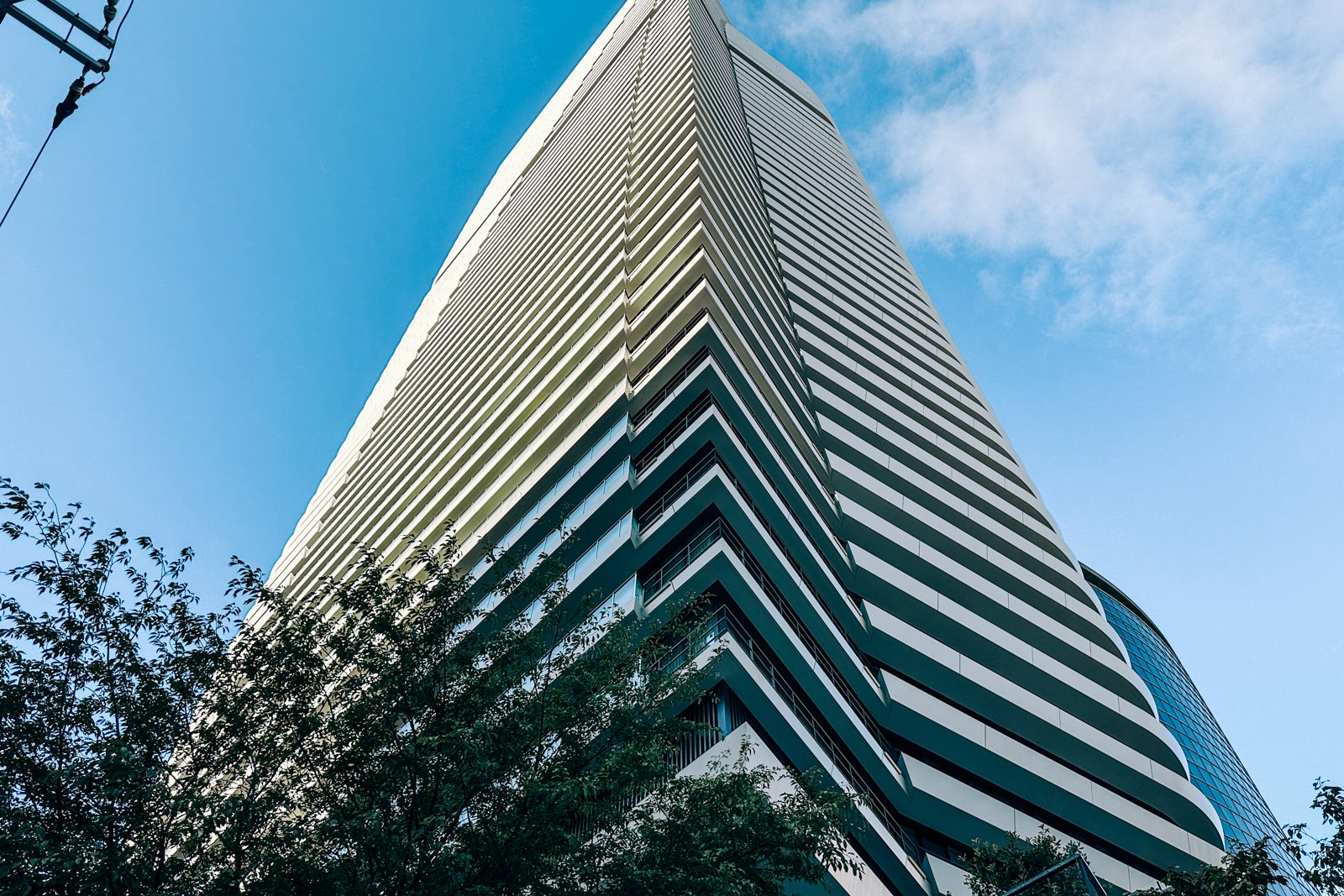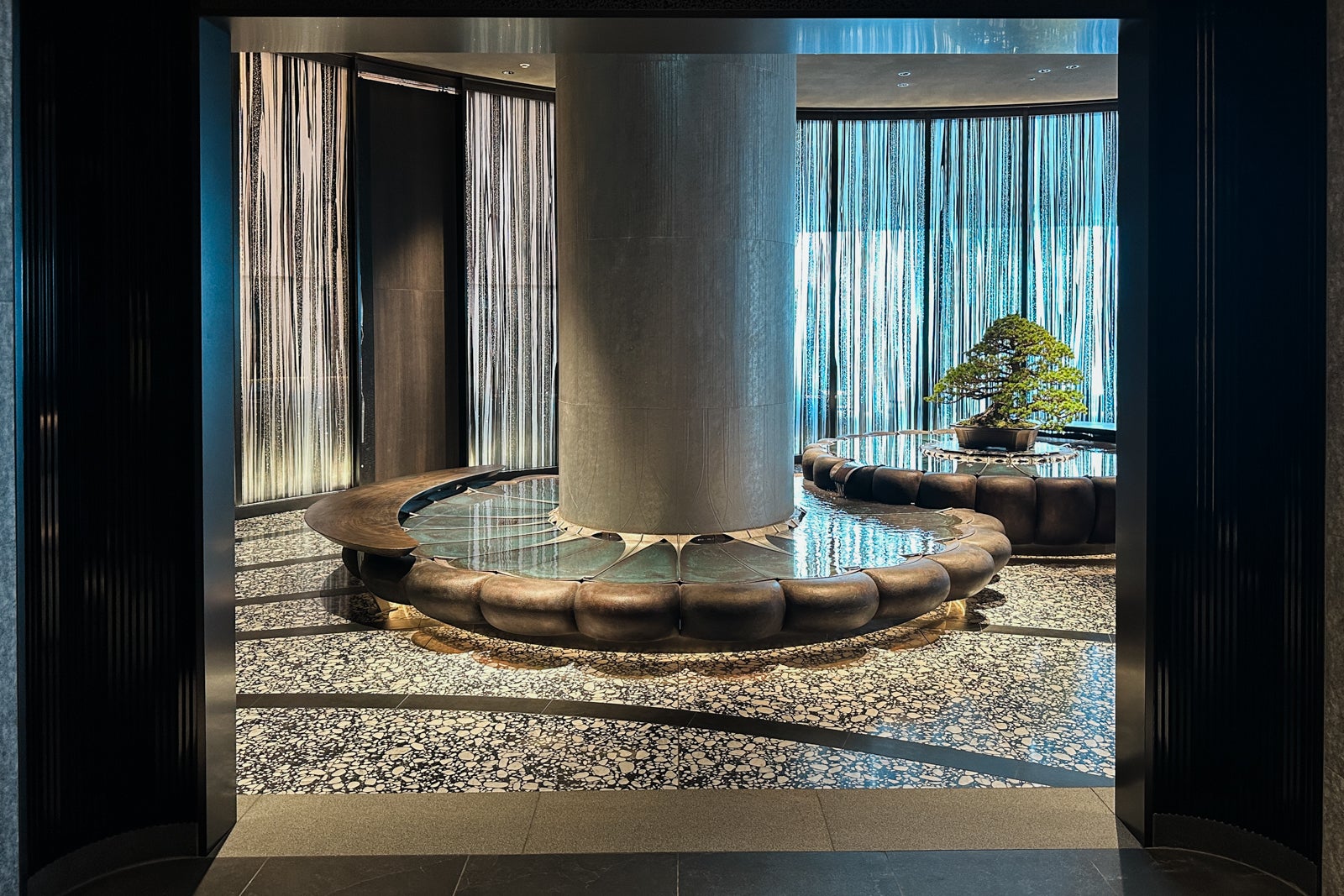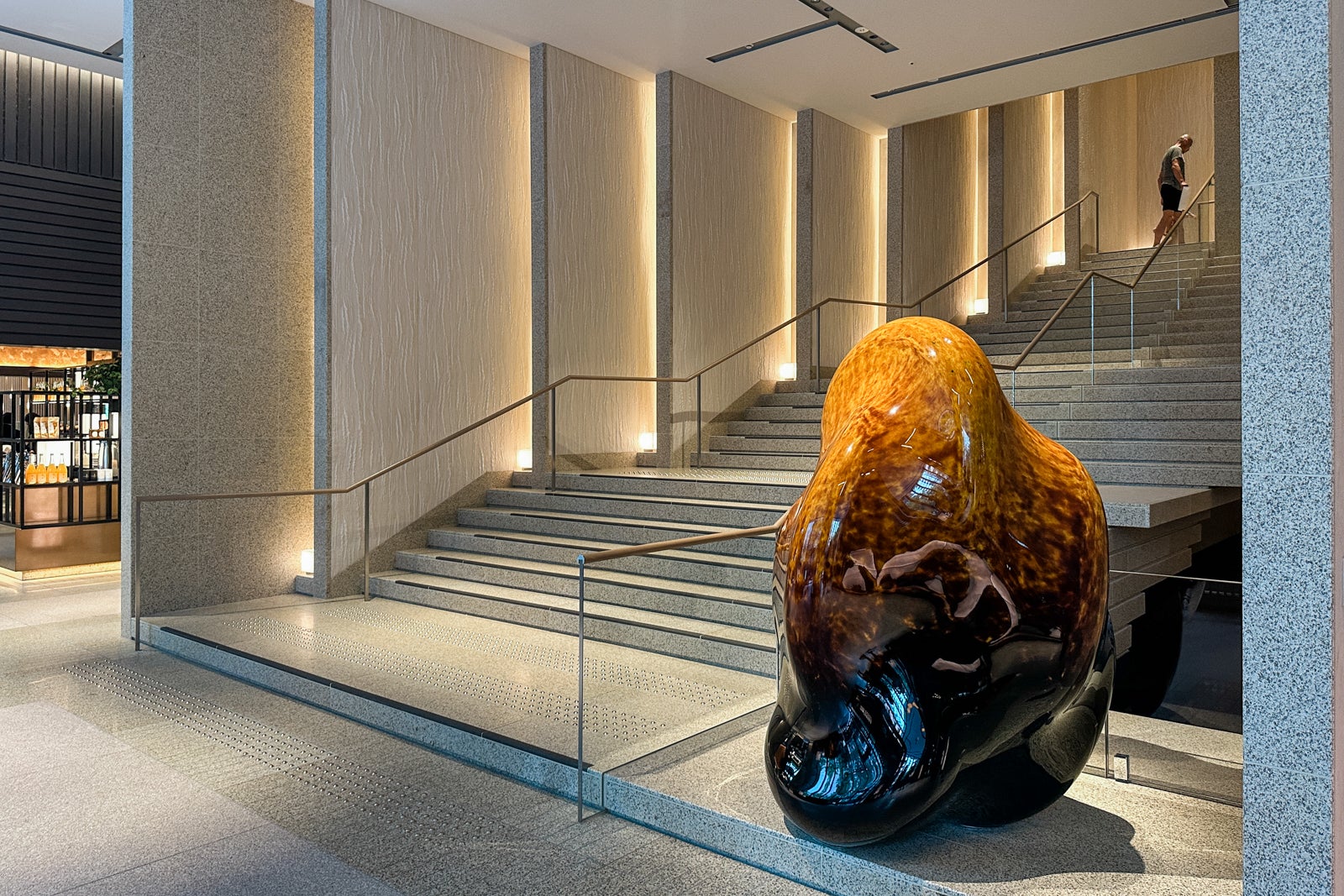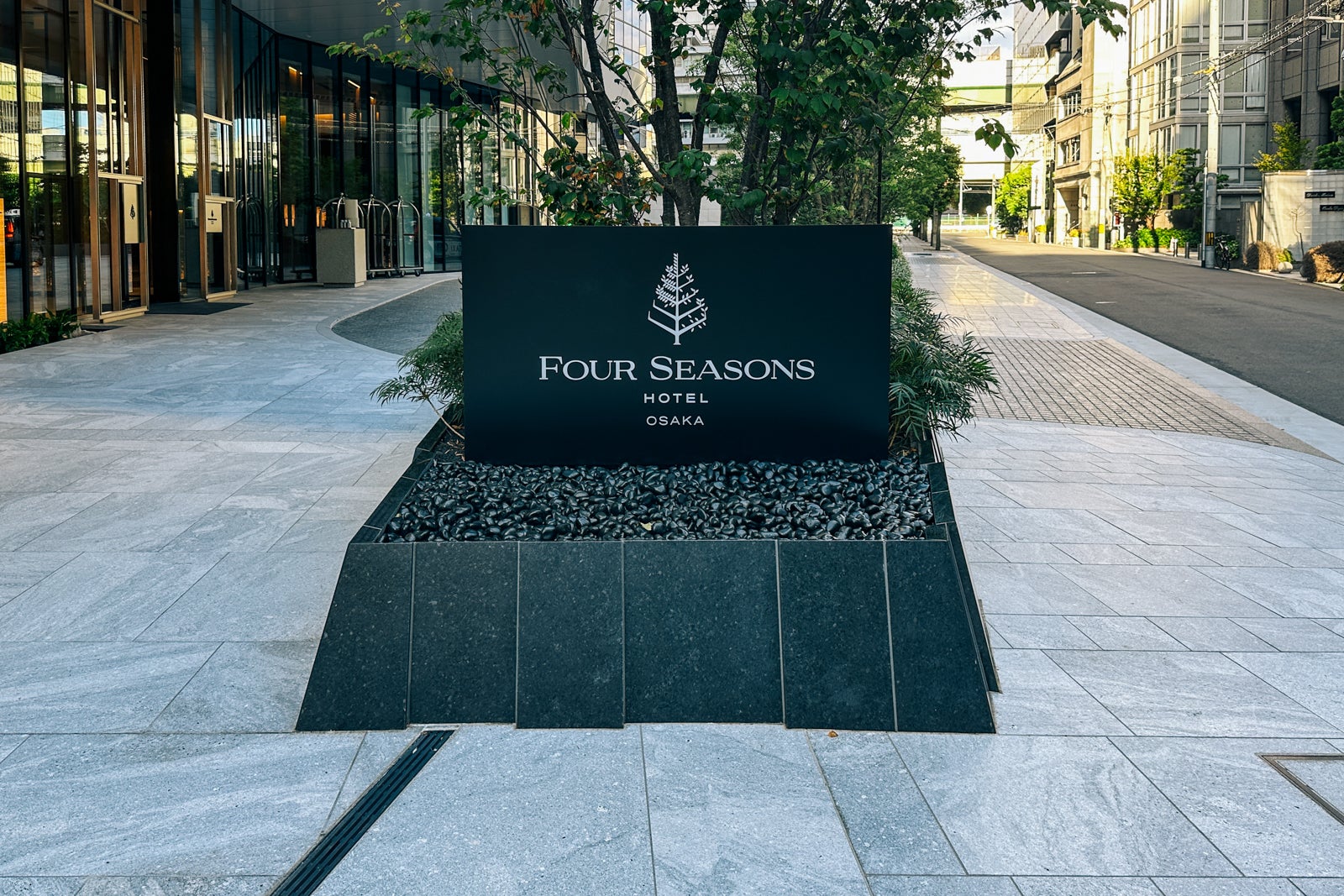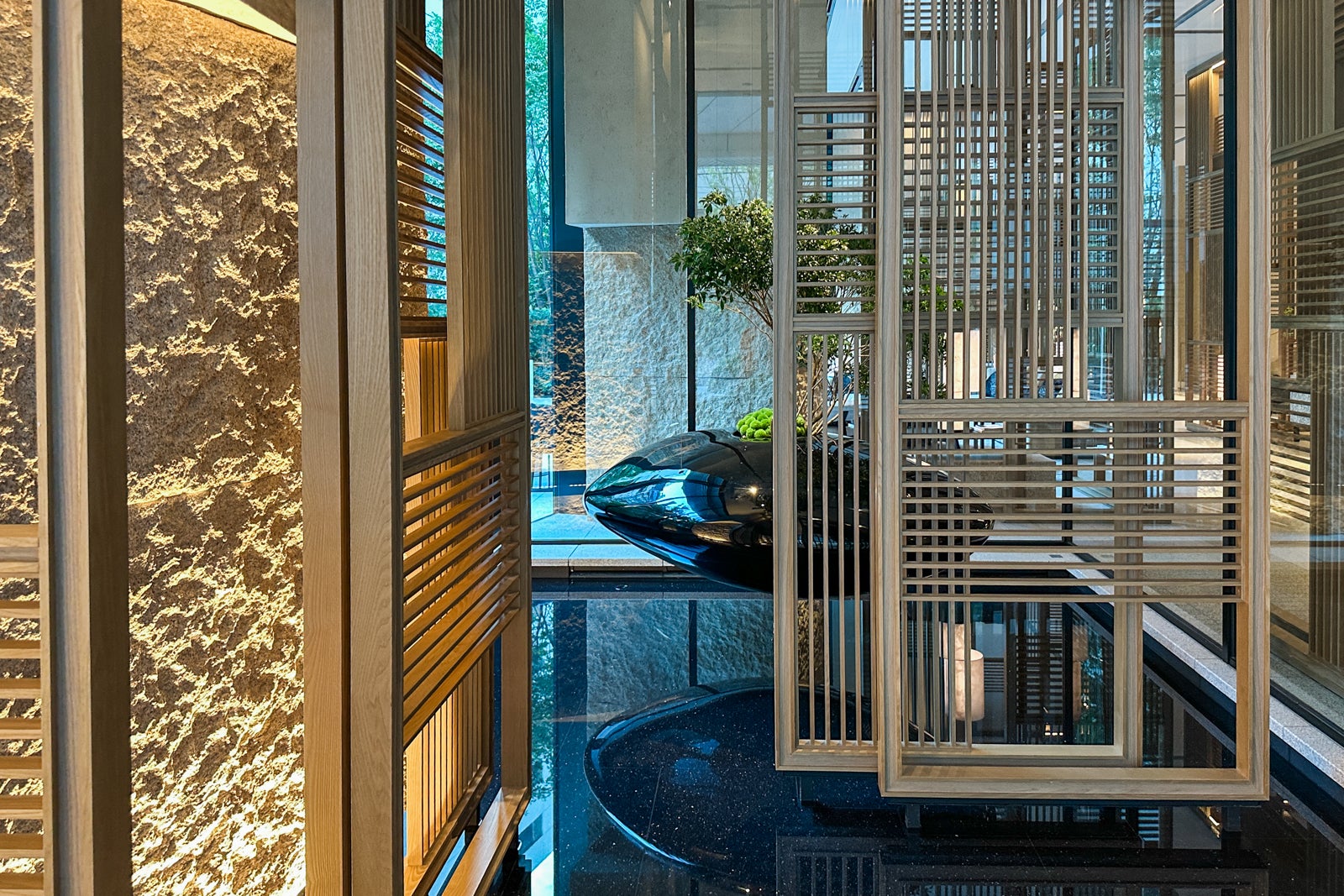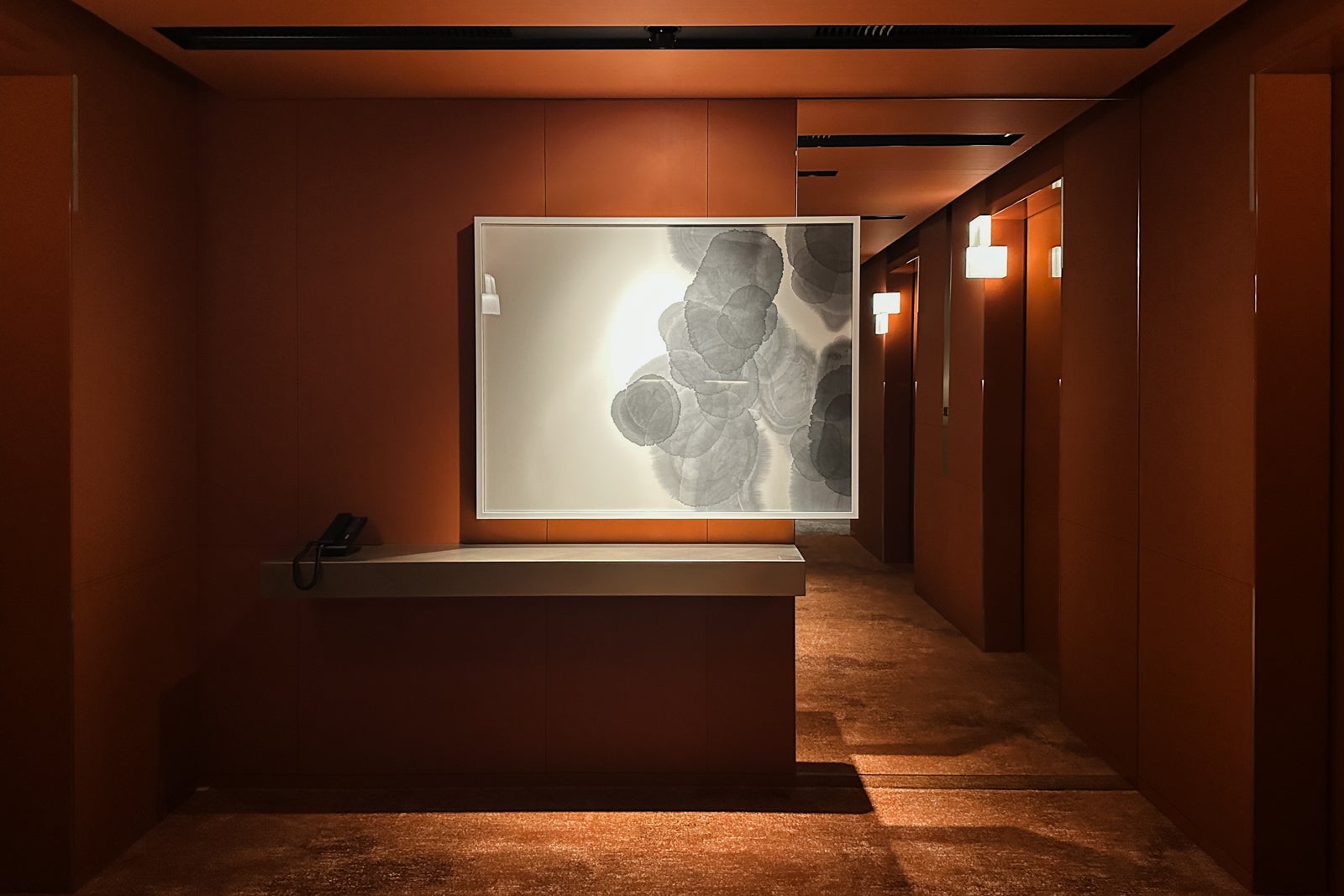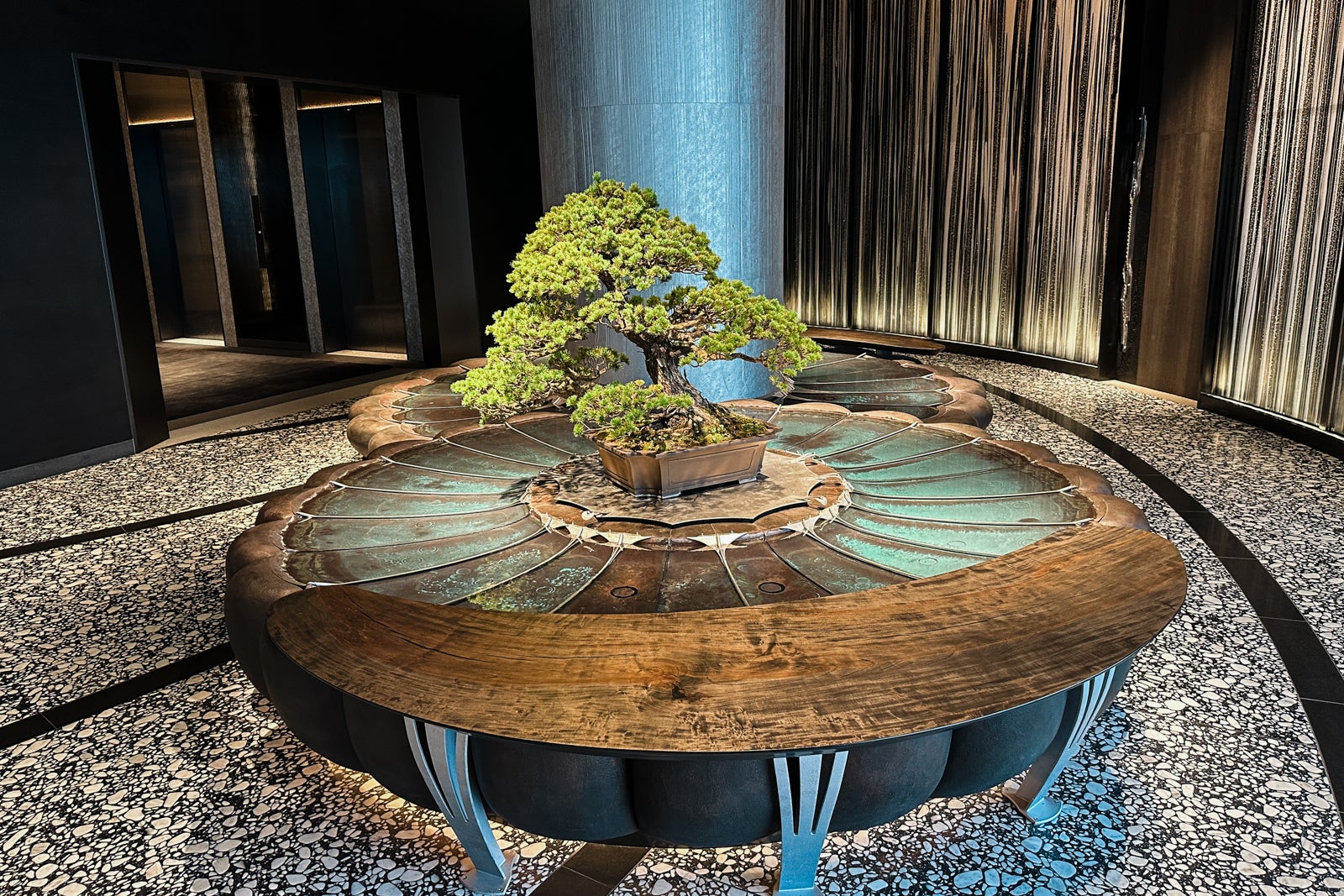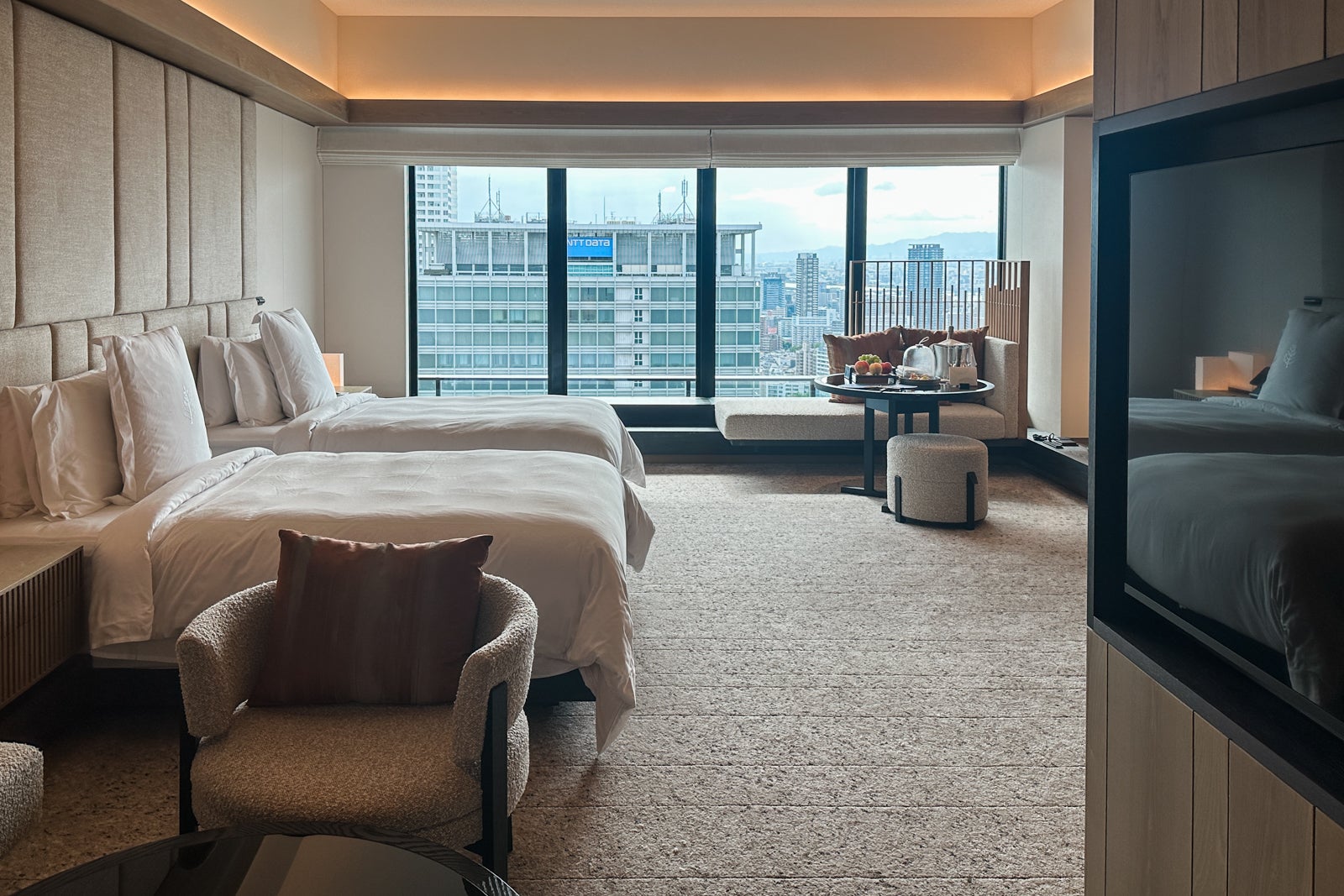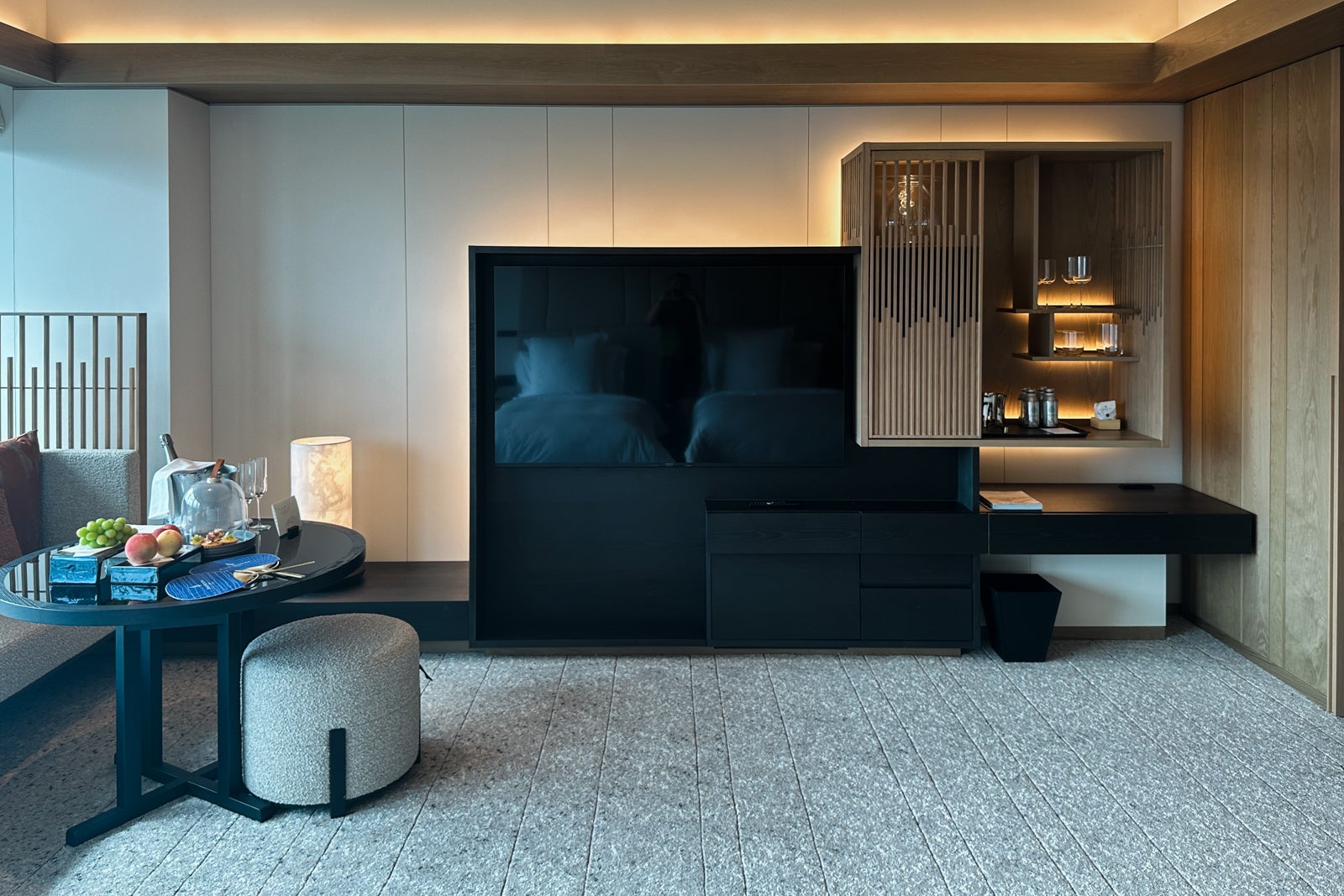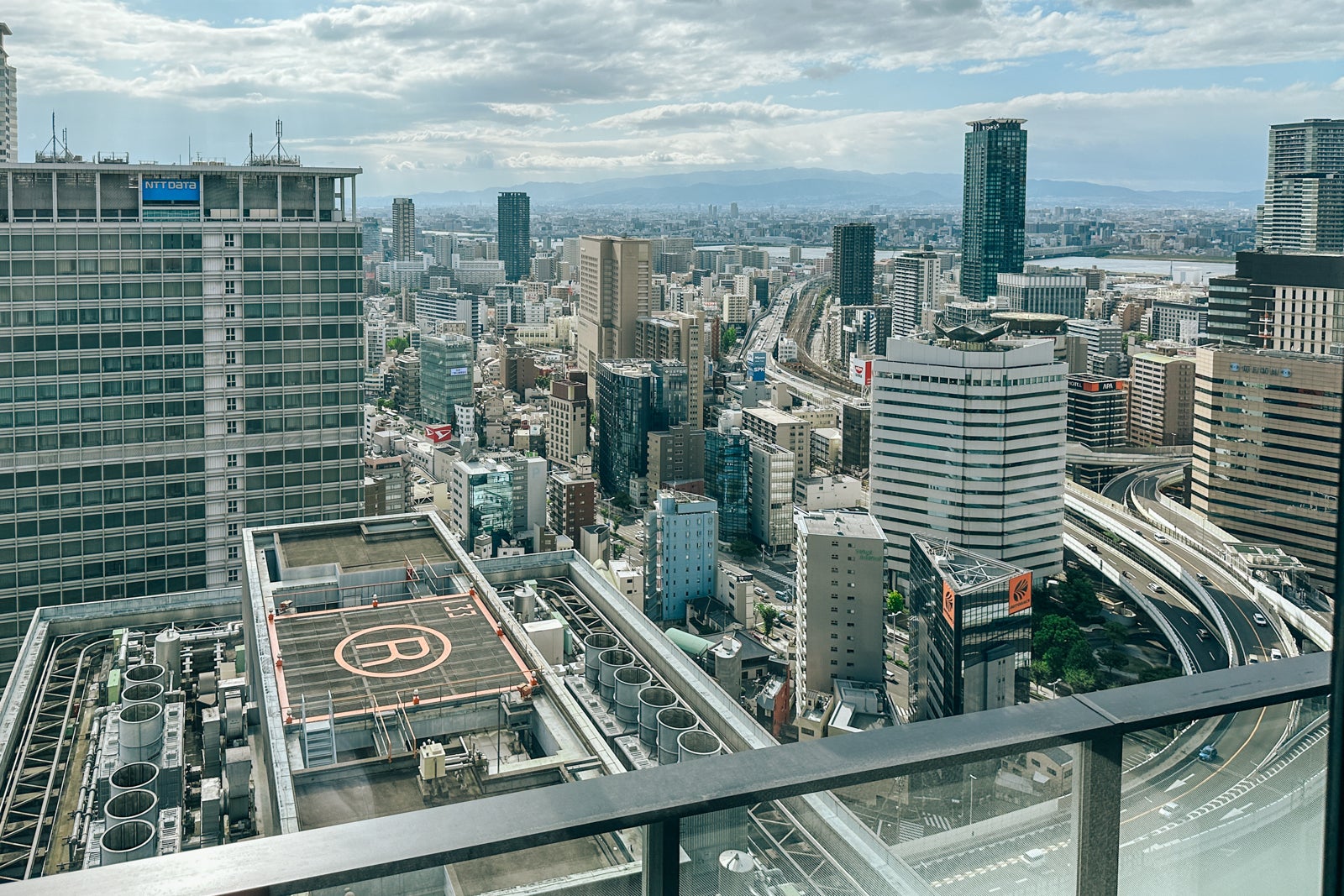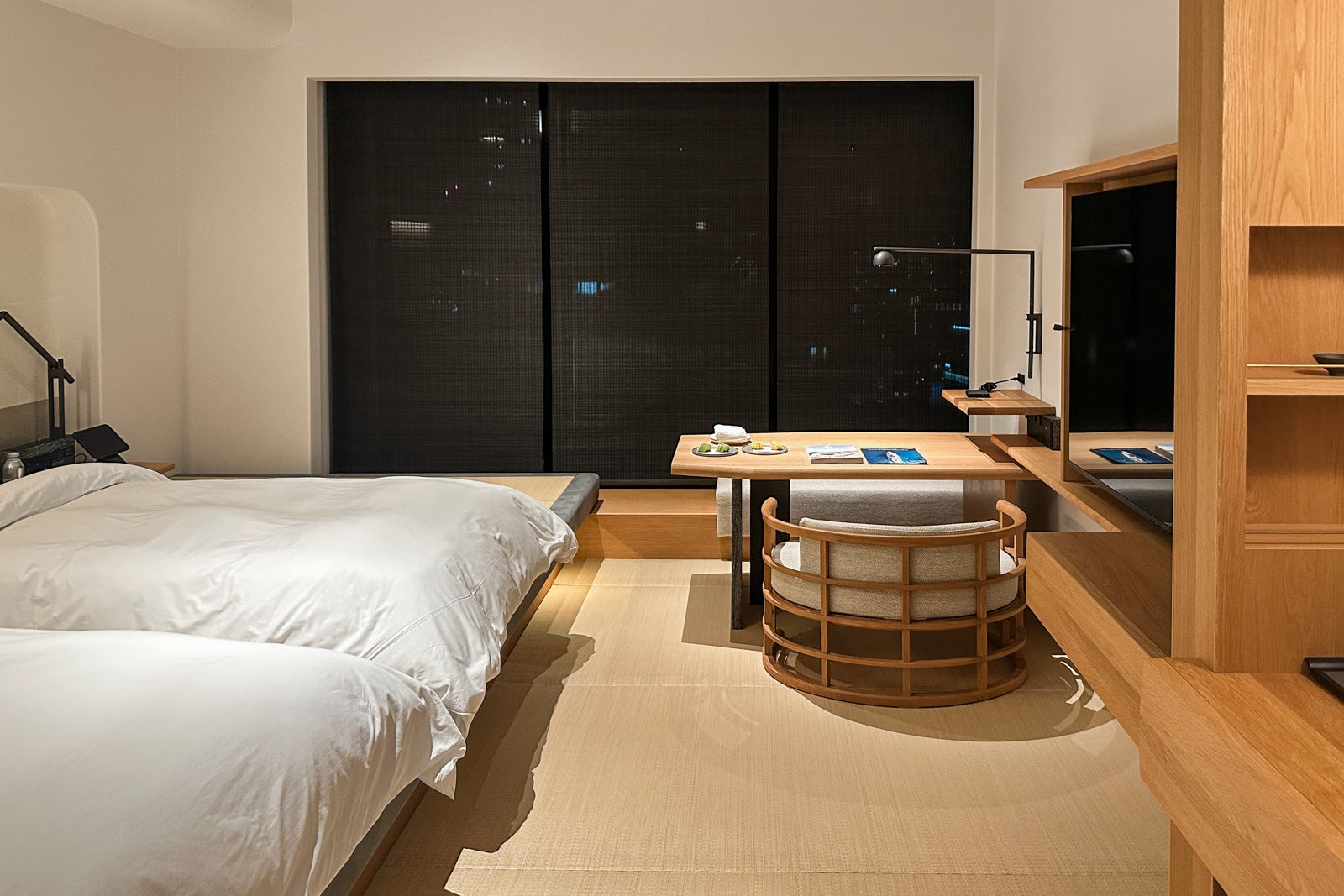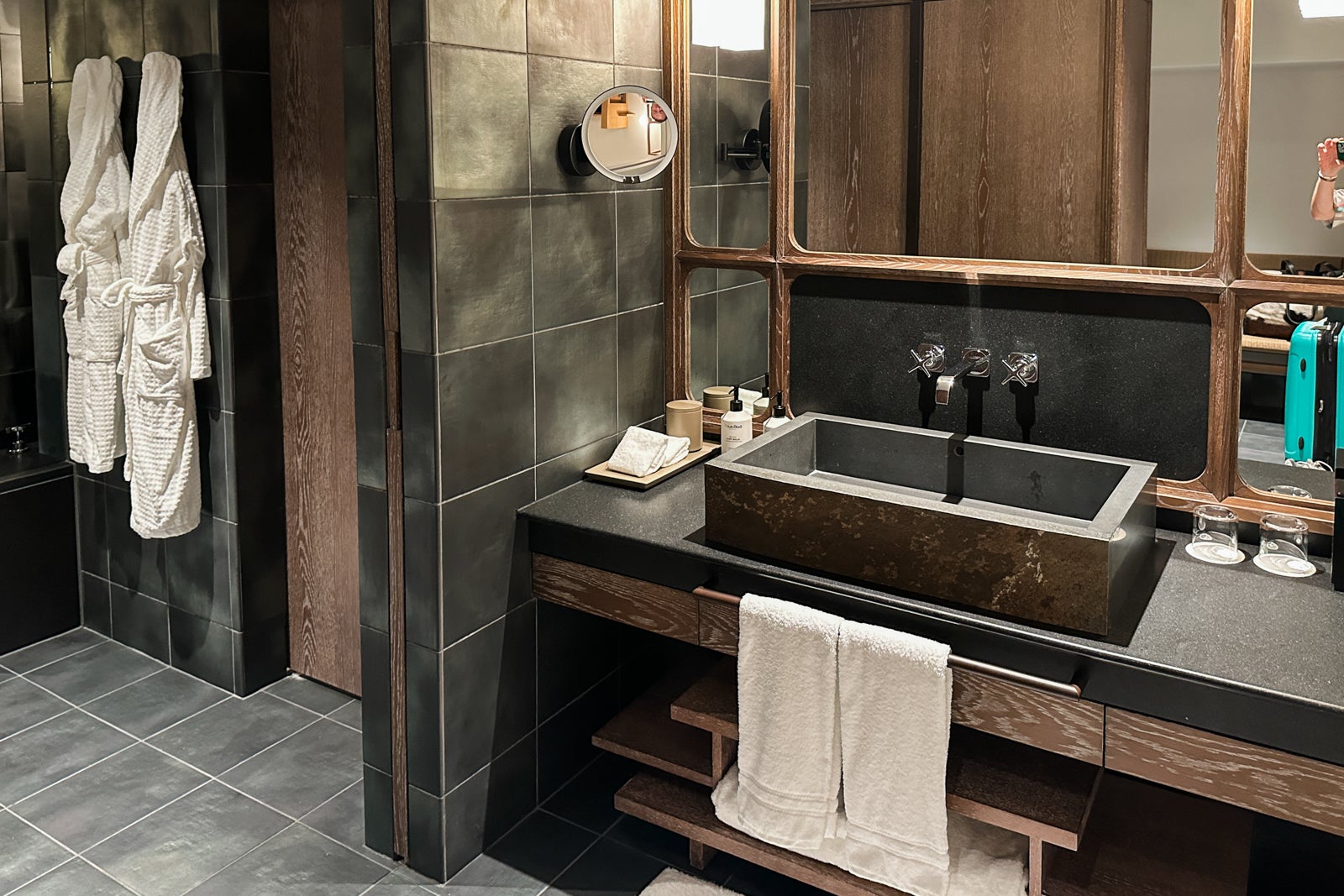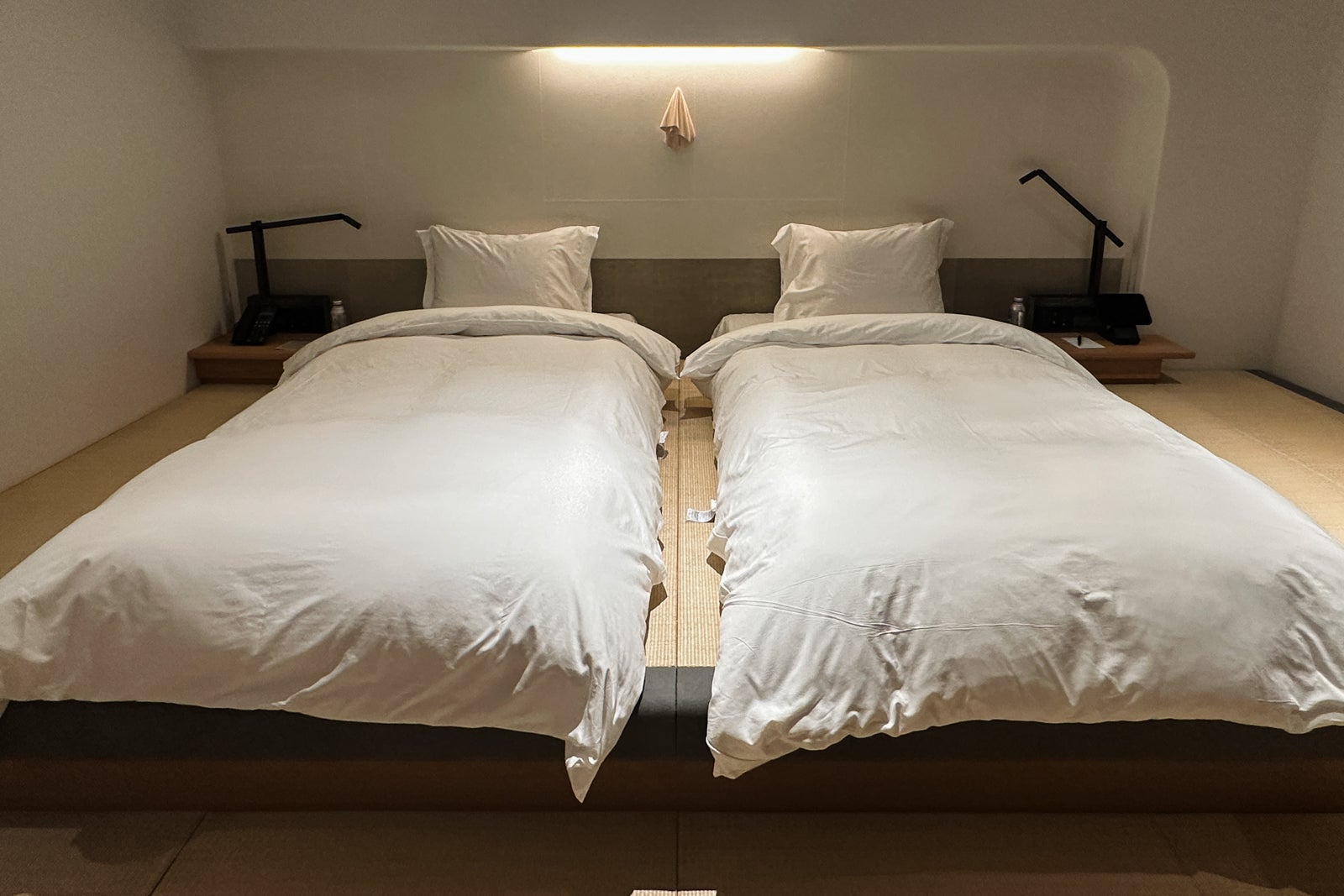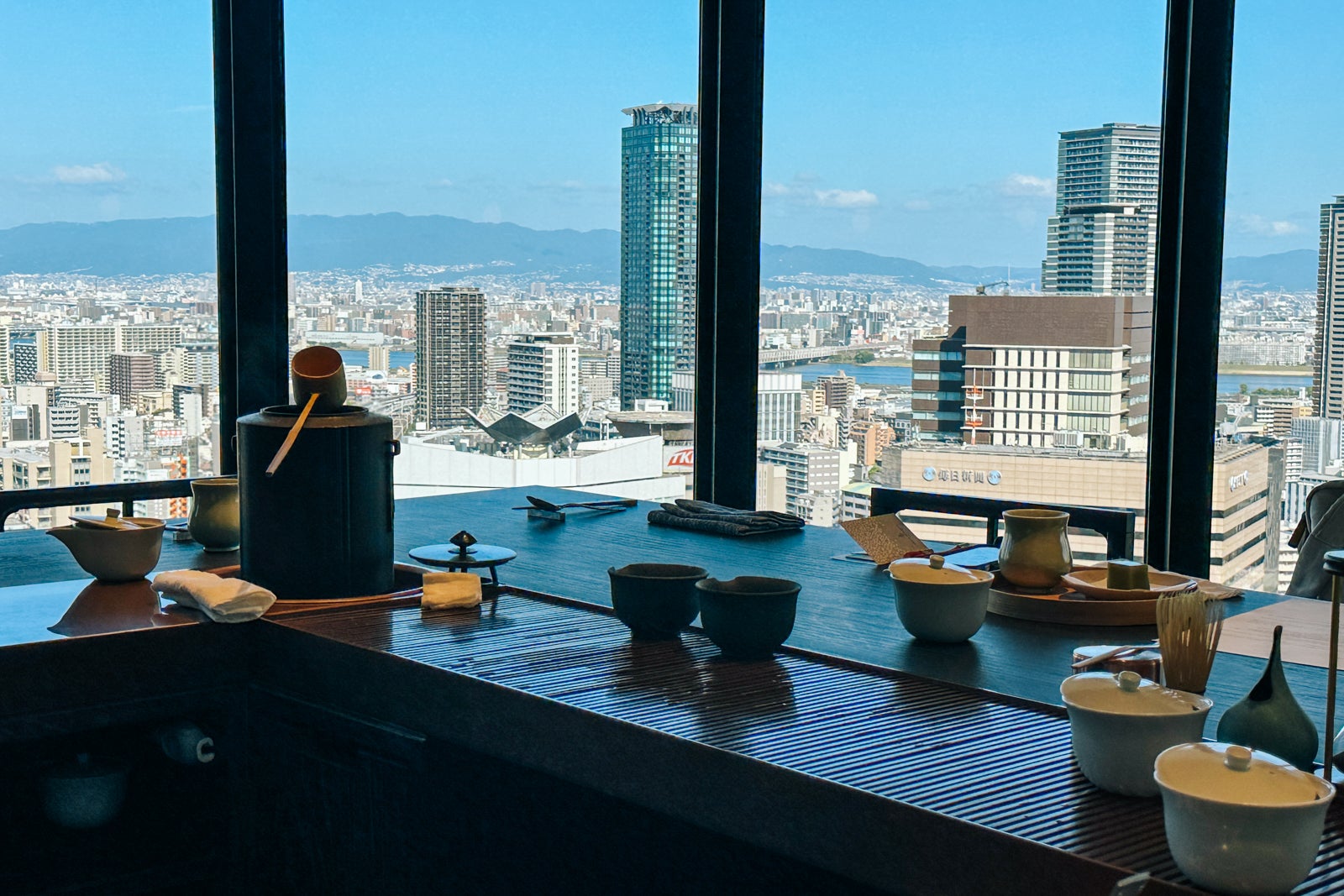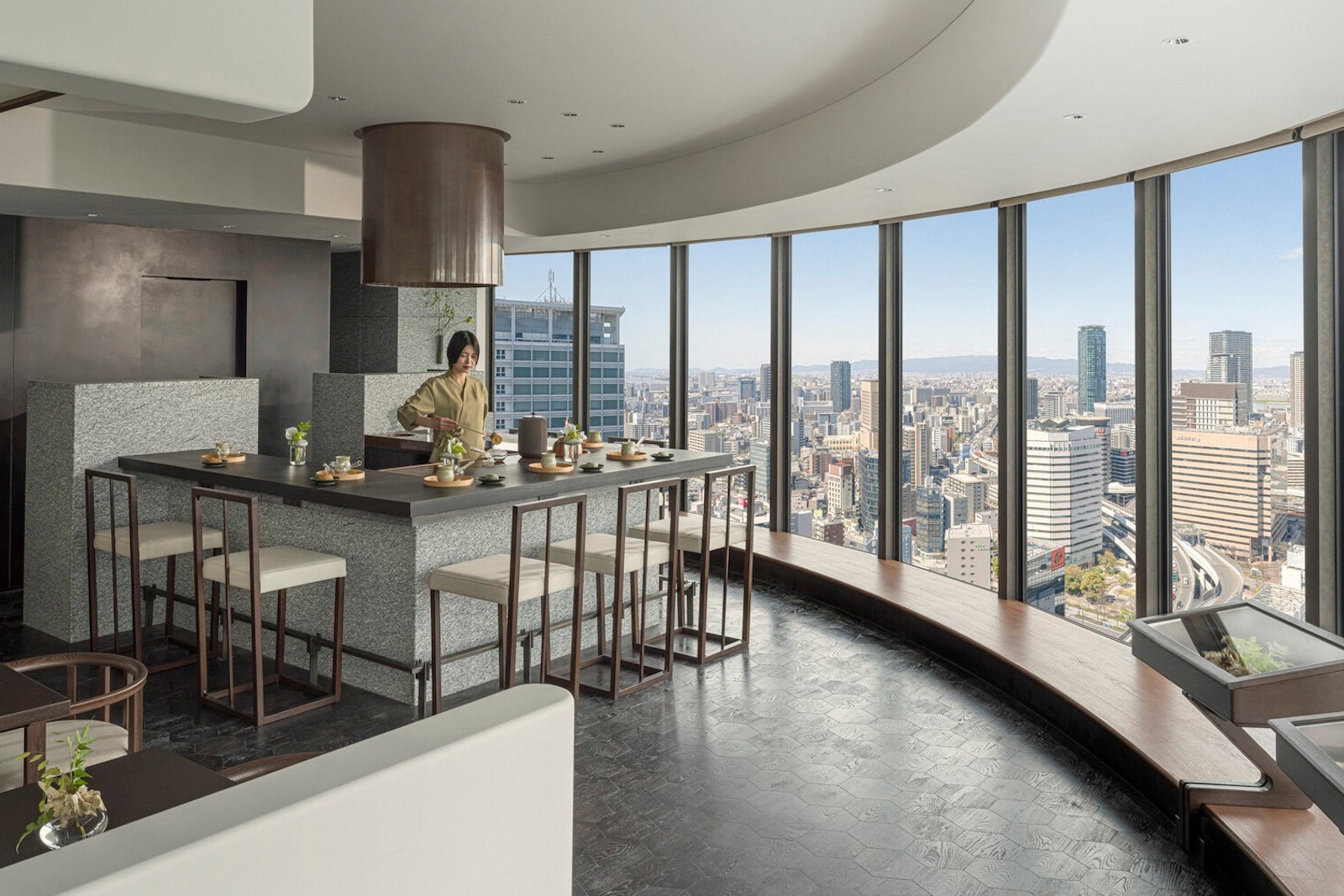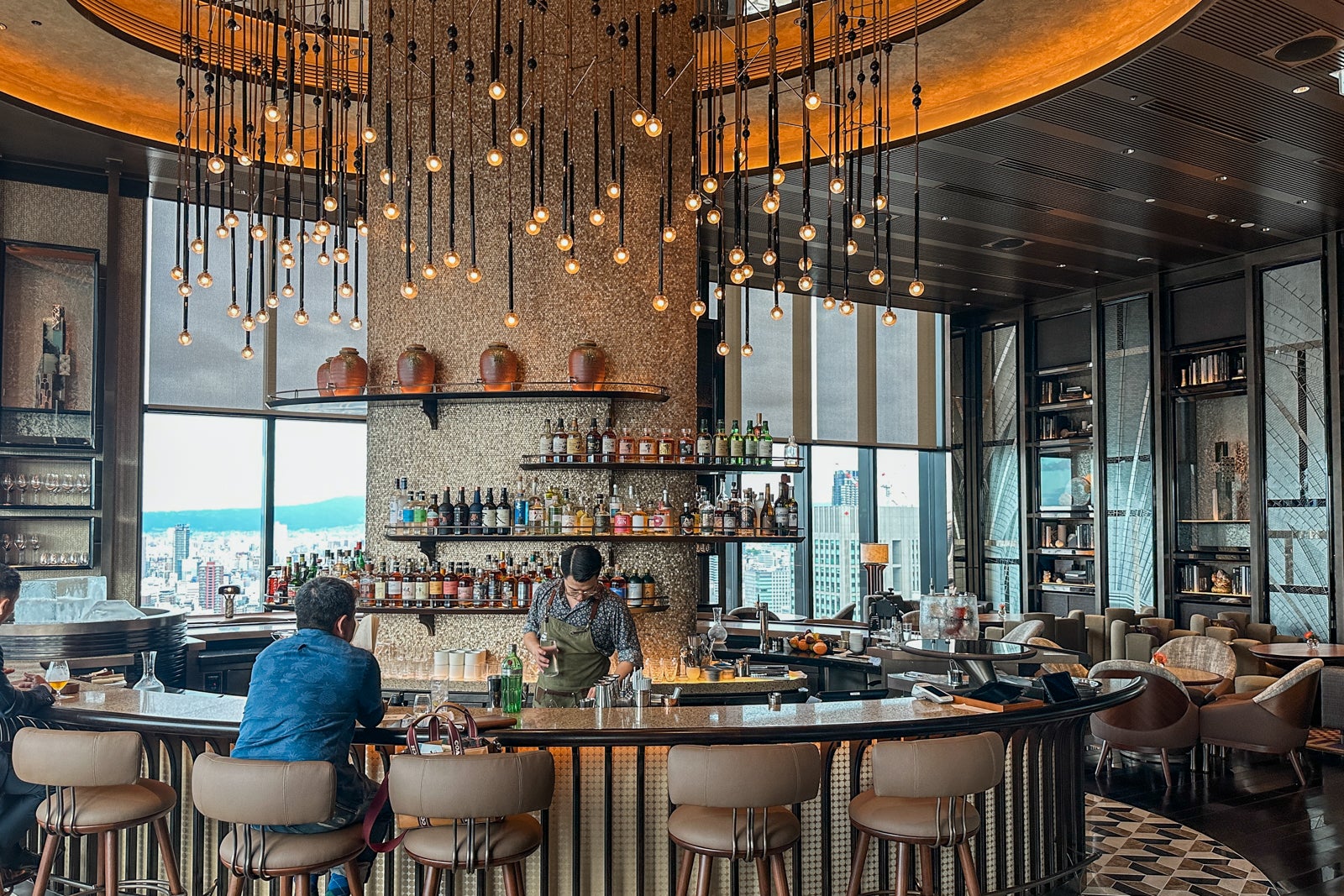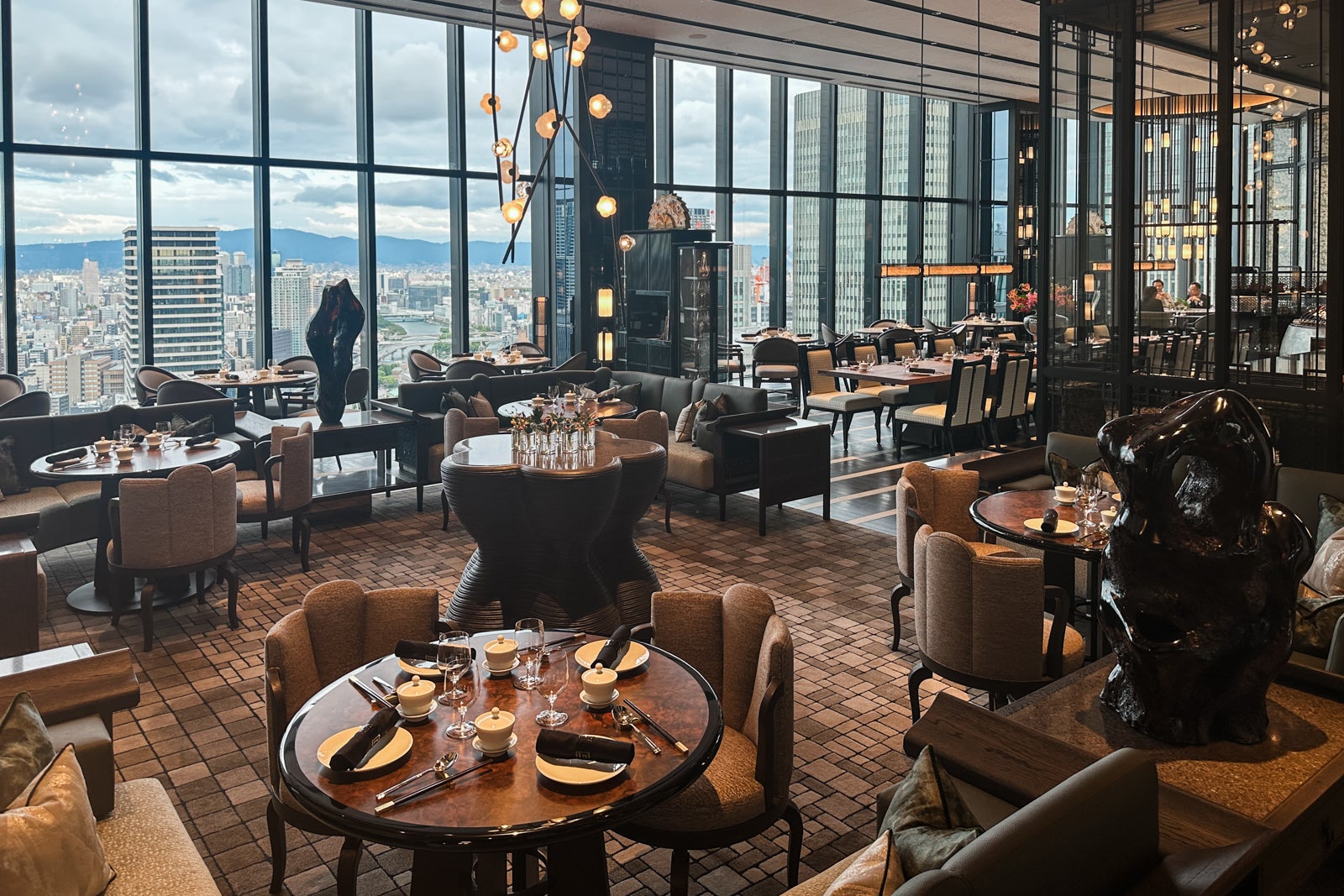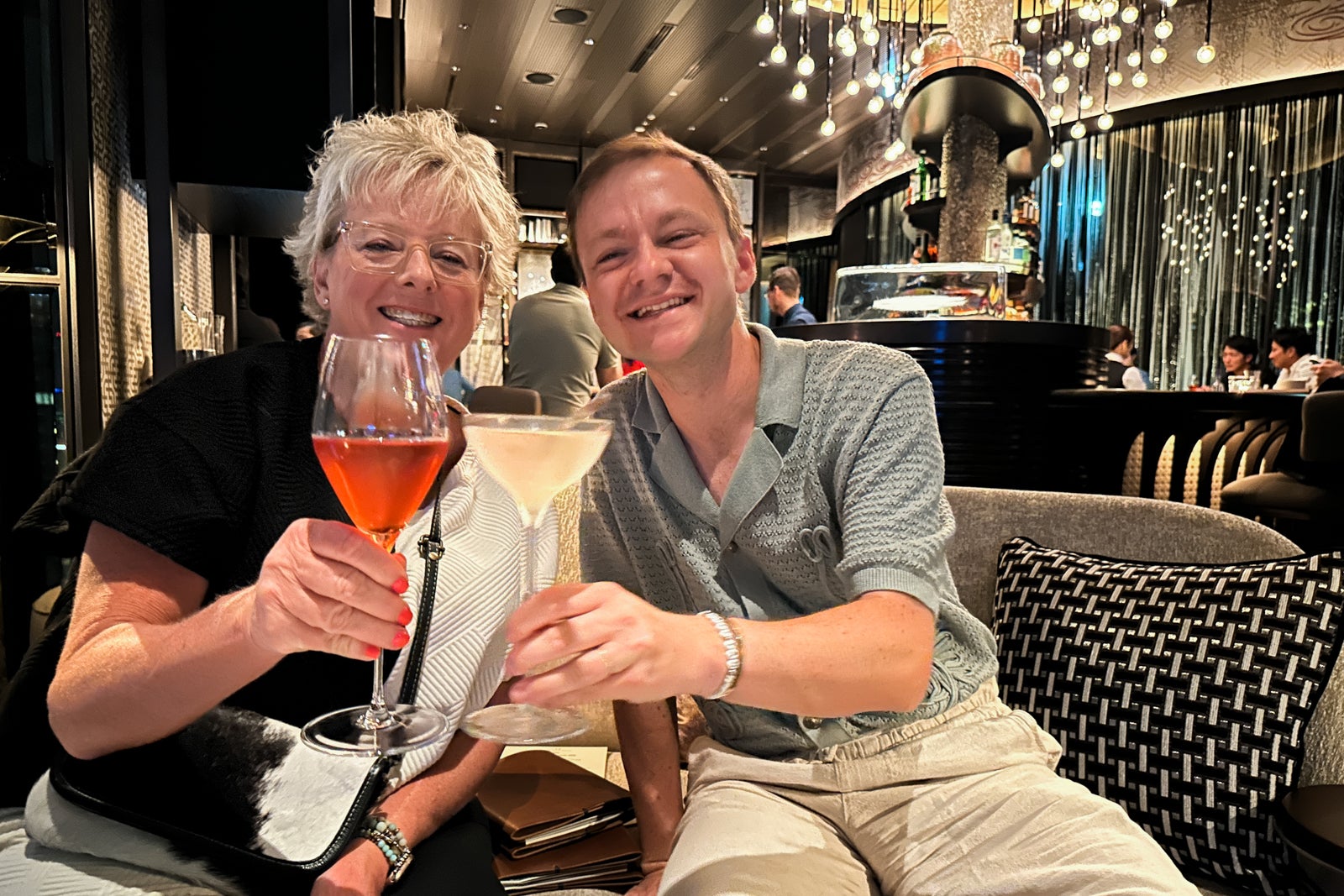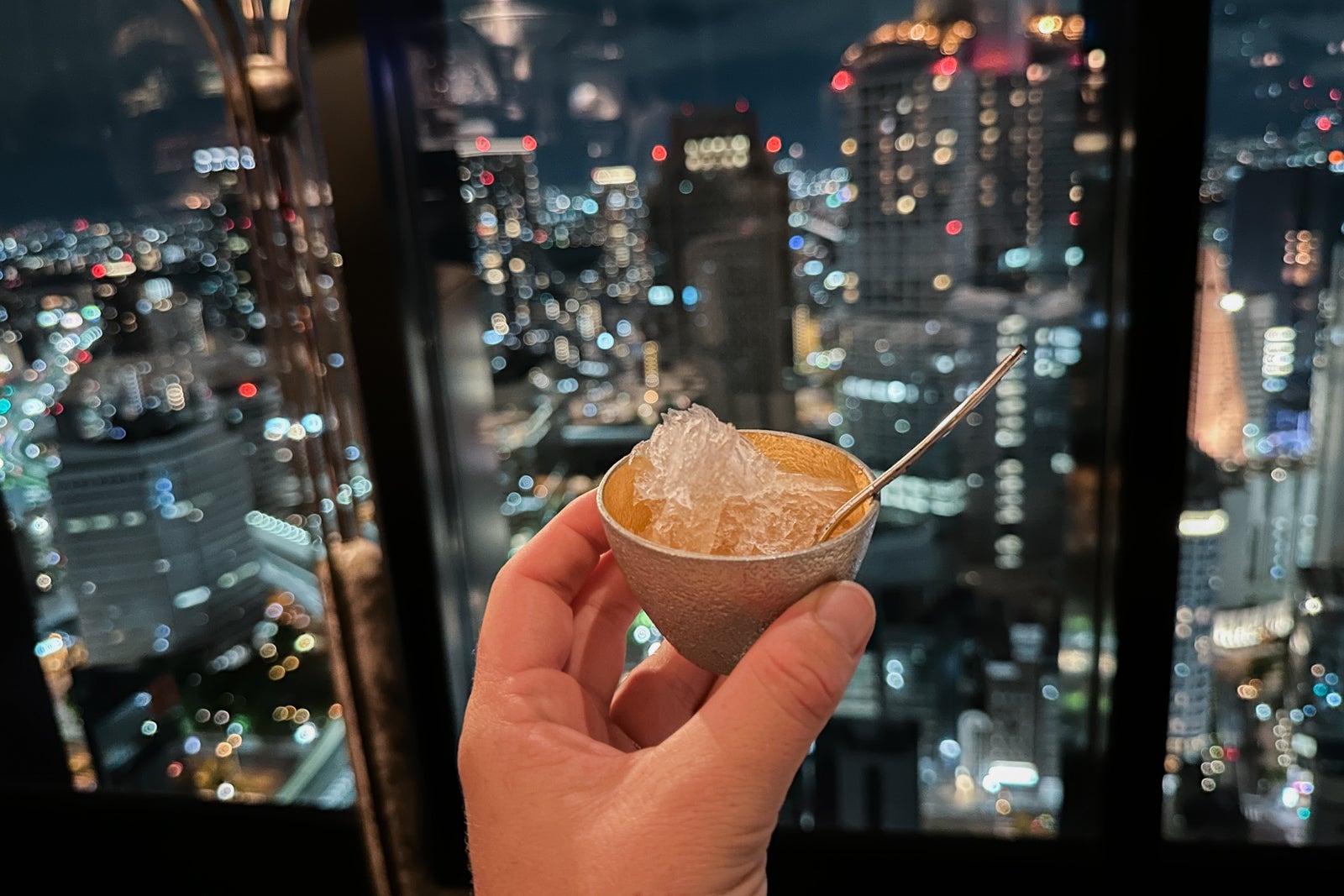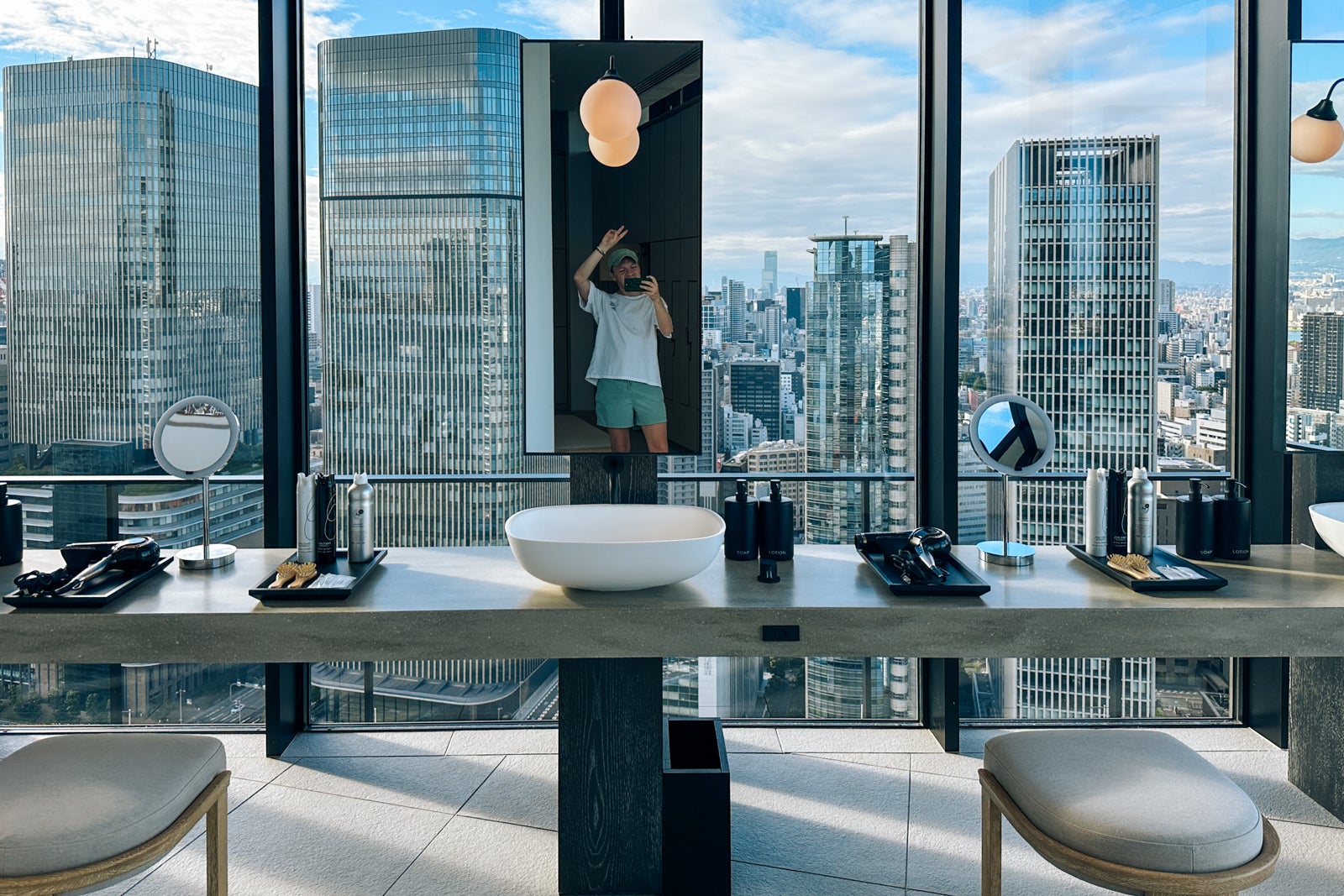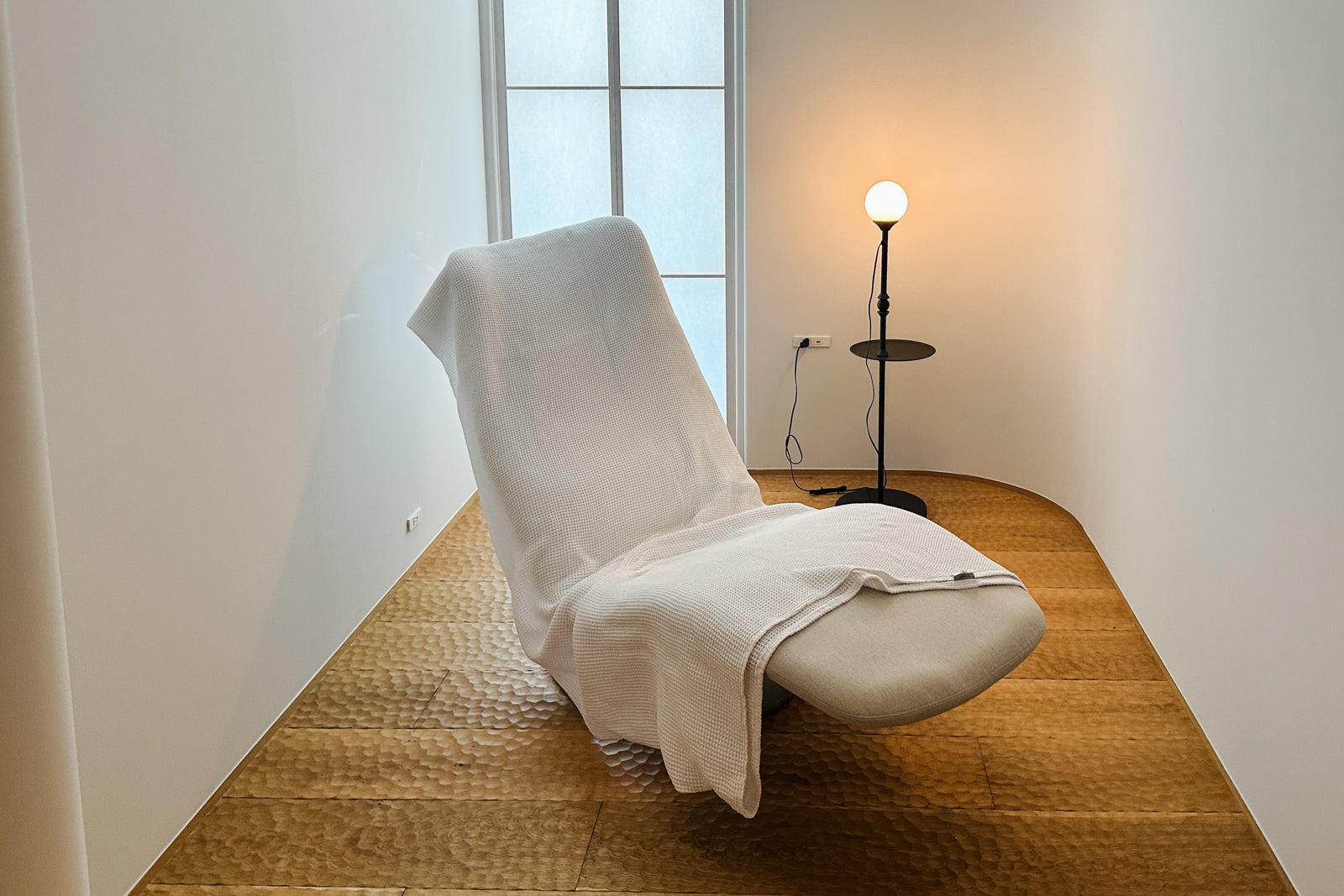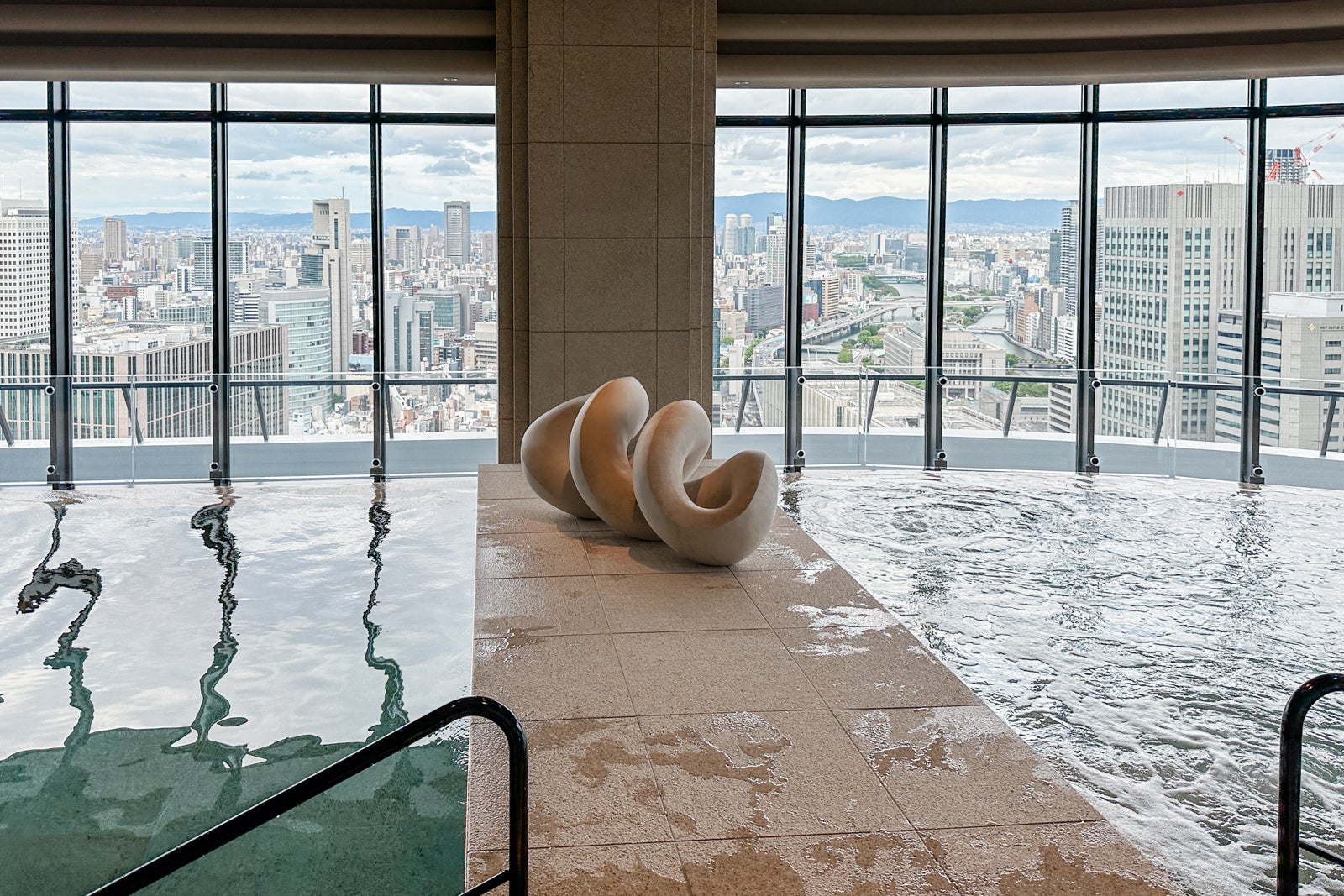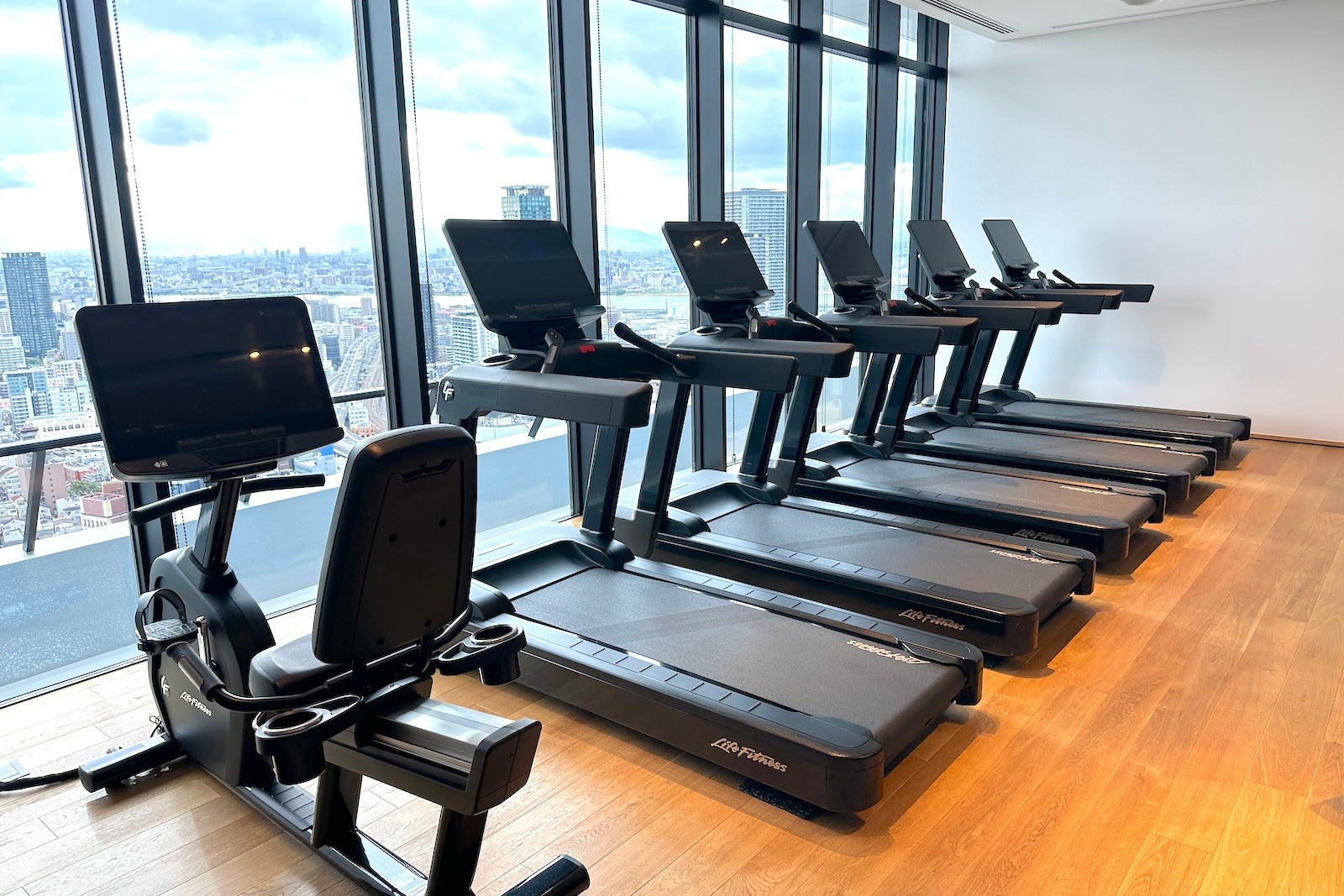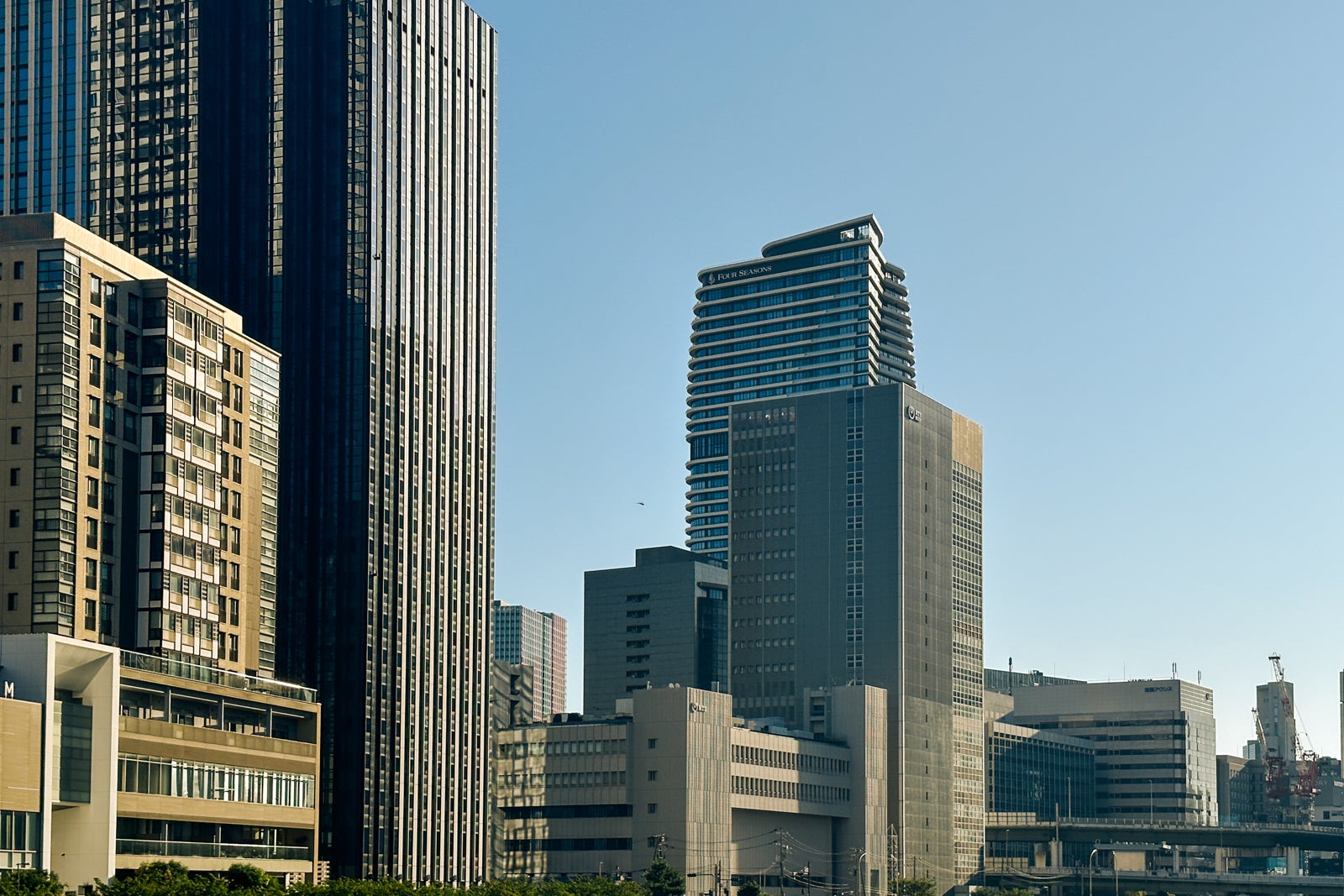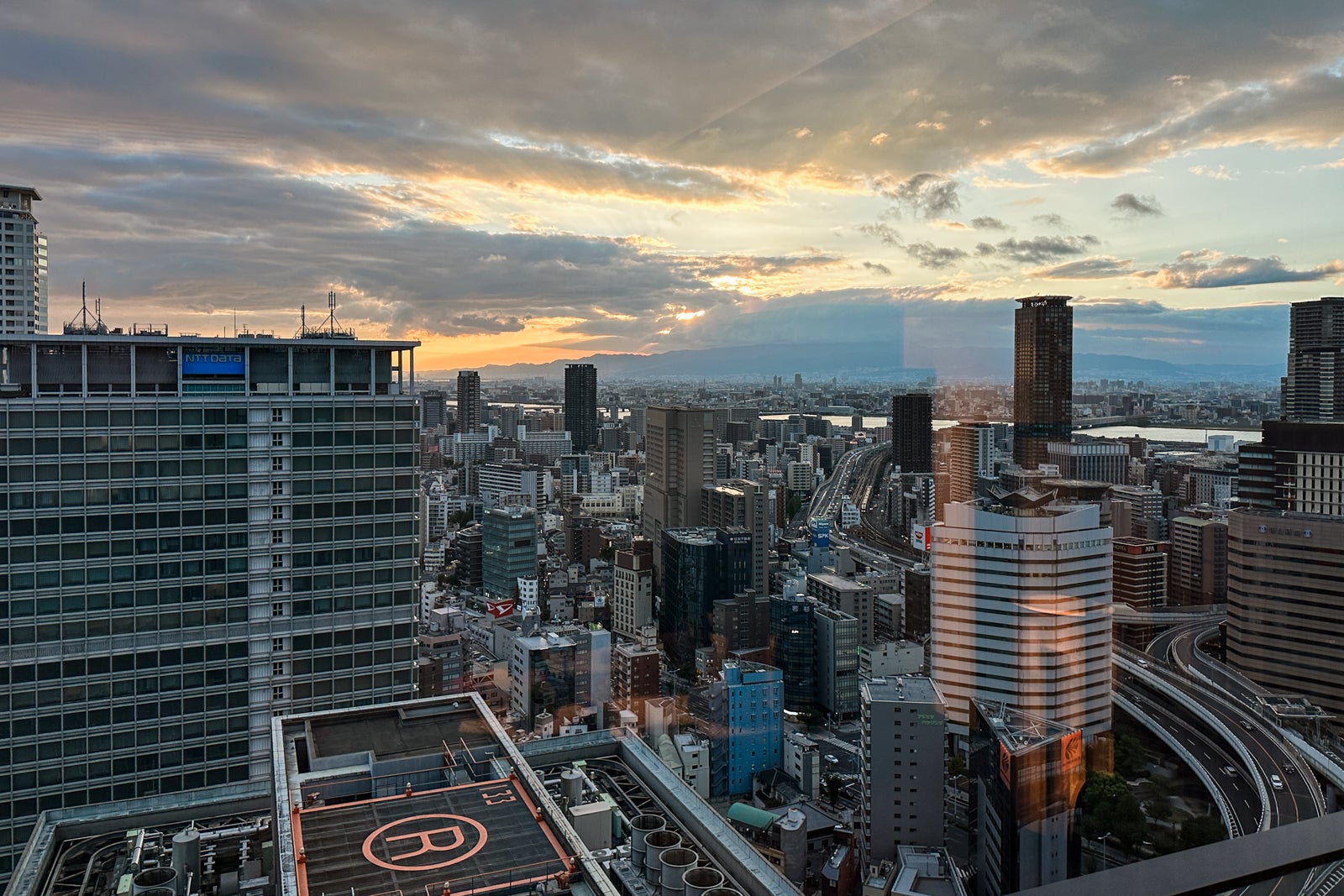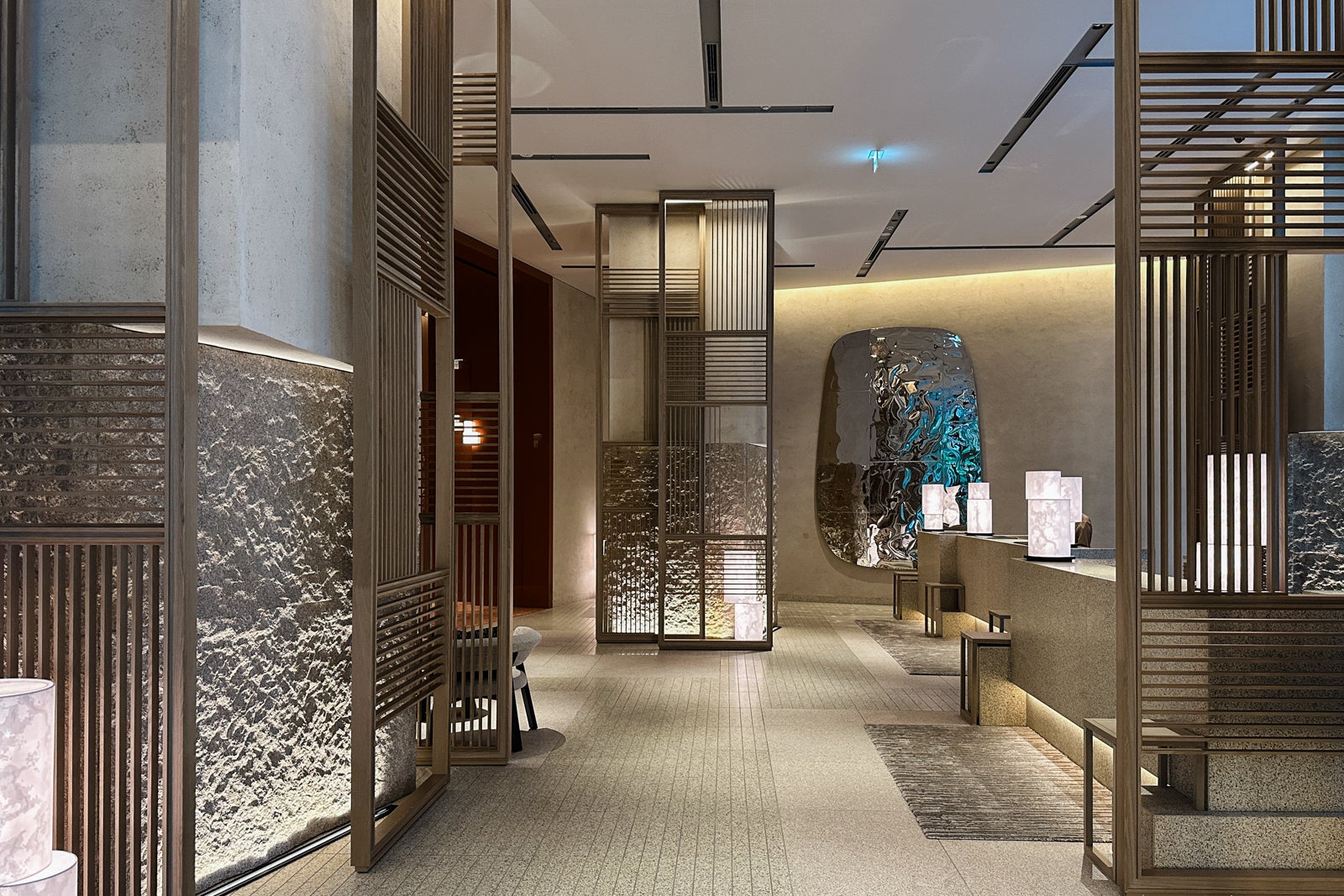In Japan, the country’s ancient past and historic traditions live in harmony with its ultramodern technologies and advanced ways of living.
For those planning a trip to Japan, this can be experienced through time spent in traditional ryokans — or Japanese inns — which often feel like stepping back in time. On the opposite end of the spectrum, capsule hotels offer individual sleeping pods stacked rows high and hallways long for an overnight experience straight out of a sci-fi movie.
In Osaka, a towering new Four Seasons wants travelers to experience the best of the country’s legendary hospitality traditions alongside the modern amenities and services the brand is known for. To do that, Four Seasons Osaka offers standard high-end rooms as well as a modern ryokan floor that delivers Four Seasons’ first-ever take on Japan’s traditional tatami room-style accommodations, complete with a lounge.
Despite the boiling sun bearing down on Japan in August, I journeyed to Osaka for a two-night stay — one in a standard room and one in a ryokan-style room — in this glitzy and glimmering new Four Seasons. From one of the most stunning swimming pools I’ve ever experienced to a luxurious take on an ancient way of sleeping, this hotel defied my already high expectations.
Here’s what it’s like staying at the Four Seasons Osaka, the newest Four Seasons hotel in Japan.
Related: The 11 best hotels in Tokyo for your next Japan getaway
Getting there
Four Seasons Osaka is located in the Kita Ward’s Dojima district, a historic area that dates back to the late 17th century and is home to the world’s first commodity futures exchange (rice).
Today, the larger Osaka area (consisting of Osaka, Kobe and Kyoto) has a few different airports, with the main two being Kansai International Airport (KIX), which handles international flights, and Itami Airport (ITM), offering domestic flights.

Daily Newsletter
Reward your inbox with the TPG Daily newsletter
Join over 700,000 readers for breaking news, in-depth guides and exclusive deals from TPG’s experts
Kansai International is about 40 miles away from the hotel and will take around an hour’s drive and cost upwards of $130. Alternatively, trains into Osaka are available for less than $20 and a bus is available for about $11. From Itami Airport, public buses and transportation are available between the airport and major train stations for less than $5. Otherwise, a taxi will will take around 20 minutes to the city center and cost $50 or more.
If arriving by Shinkansen, Japan’s famed bullet train, as I did, you’ll arrive at Shin-Osaka station, which is about 15 minutes from the hotel via car. We quickly grabbed a taxi and made it to the Four Seasons for less than $20. You can also transfer to the subway and ride four stops on the Tokaido-Sanyo Line for a 15-minute commute that costs just a few bucks.
Related: 9 tips for train travel in Japan
Booking details
Sadly, Four Seasons doesn’t have a loyalty program at this point (though we’d love to see one someday), and having just opened in August, the hotel is so new that it’s not yet part of a credit card booking program, like Amex Fine Hotels + Resorts or Chase’s The Edit, which both offer elitelike perks including potential room upgrades, early check-in, late checkout and on-site credit for dining or a spa treatment. That said, they’ll likely be added to those collections in the near future.
For now, you can book directly on the hotel’s website with cash for rates starting around $651 per night for a traditional room and $807 for a Gensui modern ryokan-floor room.
Standout features
- Four Seasons’ luxe take on a ryokan is a great way to experience traditional Japanese hospitality with a modern twist.
- From the swimming pool to Bar Bota, the sky-high views of Osaka are mesmerizing.
- The breakfast buffet at Jardin, the sun-drenched lobby restaurant, offered a feast each morning.
- Chef Raymond Wong Wai Man’s Cantonese restaurant Jiang Nan Chun offers a stunning tasting menu that combines unexpected textures with unforgettable flavors.
- In the 36th-floor spa, traditional Japanese baths, or ofuros, allow guests to soak face-to-face with the skyline.
Drawbacks
- You’ll have to wait before being able to book through a program that offers elitelike perks.
- While the hotel was easy enough to get to and from, the location felt a little sleepy and set back from the city itself.
- Having opened at the beginning of August, the hotel, still in its infant stage, was working out some small service hiccups — and that’s to be expected.
The vibe
Taking up a series of midlevel floors in the 49-story One Dojima building, as well as the ground-floor lobby, the Four Seasons Osaka is a chic, if not dramatic, hotel. It starts from the moment guests arrive and walk past a glass-enclosed installation of a sort of magically suspended rock planter holding a tree. That piece sets the tone for the hotel’s contemporary art and design scheme, alongside gorgeous elevator banks reflecting the orange coloring found in traditional urushi, or Japanese lacquered boxes and other subtle nods to Osaka, the City of Water.
Throughout my stay, and especially at the communal breakfast area each morning, I enjoyed observing the hotel’s clientele, which ranged from large, well-to-do American families tagging along on a parent’s work trip to international business people talking shop over coffee and chic, designer-clad couples quietly communing over a Japanese breakfast.
At night, the vibe shifted significantly on the 37th floor when the bar — and its floor-to-ceiling windows — turned into a social hot spot with guests, locals and all types of people vying for a seat with a view. It was a great place to end a night in Osaka, and proved that this new Four Seasons is the full package from the minute you wake up until you fall back into those feathery down pillows.
The rooms
For my two-night stay, I spent one night in a junior suite and one night in a tatami premier room on the Gensui modern ryokan floor.
The junior suite
Clocking in at 657 square feet, Four Season Osaka’s junior suite felt palatial, especially by Japanese standards (and as someone whose last trip to Japan involved staying in a capsule-style hostel). Like most Four Seasons, the design was contemporary, light, comfortable, homey and airy. Walking in, eyes were immediately drawn to the wall of windows framing Osaka and the distant mountains, a daybed and a small table sitting in front.
1 of 3
TANNER SAUNDERS/THE POINTS GUY
Walking into the suite, I was immediately met with a walk-in closet offering plenty of space to hang clothes and unpack, as well as amenities like umbrellas and, my favorite in-room amenity, a steamer.
1 of 2
TANNER SAUNDERS/THE POINTS GUY
Across the way, a larger-than-life, sort of open-concept bathroom that could be closed off with sliding doors, housed dual vanity sinks, a huge soaking tub, a glass-enclosed shower and an entire mirrored wall handy for getting ready. The high-tech Toto toilet with more buttons than you can imagine was in a separate room to the side of the sinks.
1 of 3
TANNER SAUNDERS/THE POINTS GUY
Natura Bisse rosemary and white tea products, like shampoo, soaps and lotions, were placed around the shower and square tub.
1 of 3
TANNER SAUNDERS/THE POINTS GUY
A small but comfortable living area with its own massive TV sat off to the side of the beds.
1 of 2
TANNER SAUNDERS/THE POINTS GUY
Though the room was large, the beds were both doubles, which is the norm in Japan, even at luxury hotels. And while the beds were small, they were plush and comfortable. One thing I love about Four Seasons is that the brand has its own line of bedding and mattresses, so you can always count on consistent, top-of-the-line sleeping experience at its properties around the globe.
Across from the beds, a second TV was housed in a sleek entertainment center that also doubled as the minibar.
1 of 4
TANNER SAUNDERS/THE POINTS GUY
Stored in and around the space were Nespresso pods, various Japanese teas, sodas, juices, wines, spirits and beers. Also in the room were various snacks “with compliments” including a little bag of Four Seasons-branded black pepper honey nuts that I will dream about for the rest of my life.
While the room itself was nearly flawless, the high-rise views of Osaka made it even better.
The tatami premier room
The 28th floor of Four Seasons Osaka is a hotel-within-a-hotel concept called Gensui, the modern ryokan floor that has 21 tatami rooms and suites and an exclusive lounge offering traditional Japanese meals, snacks, teas and sakes. Gensui is a reference to both the dark components of the experience (gen) and Kyoto being the City of Water (sui).
In Japan, tatami mats hold much cultural significance and are used in everyday life, from dining to relaxing and even working and sleeping. Four Seasons’ take on a tatami-style room combined the traditional with modern, luxurious elements, making for a unique experience that was still totally comfortable and practical (at least for those of us unfamiliar with this type of room or hospitality style).
1 of 2
TANNER SAUNDERS/THE POINTS GUY
Arriving for our one-night stay in a tatami premier room, the vibe on the ryokan-style floor shifted significantly. In the hallway, dark and moody lighting, deeper and darker hues and tones and an overall sense of calm, quiet and respect guided us to our room.
1 of 2
TANNER SAUNDERS/THE POINTS GUY
On entry into the room, we found ourselves in a sort of u-shaped room that doubled as the bathroom and entryway and was divided by a large double-sided closet standing freely in the middle of the room. A handy bench sat against the entry wall, allowing for guests take shoes off and switch into slippers before entering the tatami room where, in Japanese culture, you must remove your shoes.
The bathroom side of the first room had one large vanity with a sink below an interesting set of mirrors, a separate room for the toilet and bathrobes hanging on the wall.
1 of 3
TANNER SAUNDERS/THE POINTS GUY
The bathing area of the room is a perfect example of old meets new, as a small wooden bench and bucket sit in the shower, alongside the same Natura Bisse products, allowing for a traditional Japanese-style bath where you can fill the bucket, sit on the bench and bathe. In a traditional situation, you might rinse, get in the neighboring bathtub and soak and then get out and really wash off. But since it’s a private experience, you can enjoy the bathtub/shower combo however you like.
1 of 1
TANNER SAUNDERS/THE POINTS GUY
In the tatami room, Four Seasons and SIMPLICITY design studios brought the best of what a tatami room might be like in someone’s home, and married it with the needs and wants of a Four Seasons traveler. For the beds, that meant highend futon bedding waiting on an elevated platform rather than having guests unroll minimally filled futons out on the floor in the traditional style.
1 of 3
TANNER SAUNDERS/THE POINTS GUY
Each of the twin futons had a nightstand with built-in electrical outlets as well as automatic controls for the curtains, shades and lights.
1 of 2
TANNER SAUNDERS/THE POINTS GUY
A table and chair, both purposefully low to the ground, sat in the far corner of the room, along with a large TV and a little space with a minibar, a tea kettle and some more Japanese snacks (still thinking about those black pepper honey nuts).
Guests who book into the Gensui floor can check in directly in the Gensui lounge on the 28th floor,
One of the best parts of the Gensui experience is having access to the Sabo Lounge, also on the 28th floor. Guests who book a tatami room are whisked up to the lounge for check-in and can take advantage of it throughout the day by enjoying a very authentic Japanese bento box for breakfast, tea throughout the day and Japanese liquors and sakes from 5 p.m.
1 of 2
TANNER SAUNDERS/THE POINTS GUY
I had the opportunity to try the breakfast bento box in the lounge and thoroughly enjoyed the experience. Along with a (not-so-traditional) iced coffee, the bento box included a bunch of things my Western eyes recognized (some fish, tofu, rice, a beautiful egg and miso soup) as well as a lot of things I couldn’t place (many pickled veggies, lots of interesting jelly-like textures and little bites that, even after being told what it was, I still really had no idea).
The bento box breakfast was one of my highlights in Japan because it afforded me the chance to try a bunch of new foods as part of a traditional Japanese experience that I likely wouldn’t have had elsewhere.
When I had access to the Soba Lounge, it was very crowded with people eating breakfast so I was unable to get a great photo, like the official photo above, to show just how beautiful the lounge is.
Bars and restaurants at Four Seasons Osaka
Across the towering hotel, there are plenty of places to eat, including on the 37th floor, where you can enjoy gourmet Cantonese food, a haute French take on sushi and bespoke cocktails, all with sky-high views of Osaka. On the ground level, an all-day French restaurant serving a gorgeous breakfast buffet and a bakery, Farine, creating beautiful pastries that seemed too beautiful to eat.
Jardin
1 of 4
TANNER SAUNDERS/THE POINTS GUY
The breakfast buffet at Jardin, an airy restaurant that was bustling in the morning, was a mix of Western and Japanese favorites, plus a few a la carte and made-to-order options. I enjoyed everything I ate, including fried eggs, sauteed mushrooms, breakfast sausage, avocado toast and a bowl of noodles in a hearty broth with a hard-boiled egg.
1 of 2
TANNER SAUNDERS/THE POINTS GUY
It was the pastry section that really spoke to me, especially the larger-than-life almond croissants and matcha-topped muffins.
Jardin is also open for lunch and dinner, as well as afternoon tea services.
Jiang Nan Chun
Back on the 37th floor, dining at Jiang Nan Chun was a delightful, over-the-top event I’d recommend to anyone looking for an upscale dining experience in a food-forward city like Osaka where many of the best local dishes are found in hole-in-the-wall restaurants and from street vendors.
At the moment, Jiang Nan Chun is offering set menus for lunch starting at 6,800 yen ($46) for a dim sum set to 14,200 yen ($96) for a seasonal lunch set. For dinner, tasting menus range from 16,800 yen ($114) to 24,400 yen ($166).
1 of 4
TANNER SAUNDERS/THE POINTS GUY
Our tasting menu was incredible and featured a few standout items that I loved, like a marinated slow-cooked egg with Kaviari Kristal caviar, chilled cherry tomatoes infused with preserved plums, marinated lobster in Sichuan pepper oil, a deep-fried crab shell stuffed with crab meat that was absolutely mouthwatering and came with two crab-shaped jellies, and, for dessert, a handcrafted bean curd flower with rock sugar syrup that was honestly too gorgeous to eat … just kidding, I ate it.
Bar Bota
Also up on 37 is Bar Bota, a beautiful cocktail bar under the direction of Andrei Marcu. Besides the breathtaking views of the city, hotel guests and locals mingle around a Japanese spirits-forward cocktail menu with drinks like the Umeboshi Martini made with red ume-washed gin, bonito, Mancino Blanco vermouth and umami bitters, or the Dotonbori Slider, crafted with Lillet Blanc, Japanese Super Citrus triple sec, pink peppercorn, cream and a milk foam cracker, both for 2,500 yen ($17).
Everyone who visits Bar Bota also gets a welcome treat of kakigori, a little taste of Japanese shaved ice.
The bar also has a small menu of bar snacks and sweets like okonomiyaki, a savory Japanese pancake (2,500 yen, $17), or chocolate bon bons (2,200 yen, $15).
Amenities and service
Japan’s spa and wellness culture is one of my favorite things about visiting the country, even if I’m not really that much of a wellness person at heart (or at home). And Four Seasons Osaka makes that easy for guests, whether you want a full-on massage treatment, want to hang out in the gender-separated public baths or just prefer to relax and take in the views at the indoor pool surrounded by floor-to-ceiling windows.
At the spa, there are five treatment rooms, including a couple’s room, offering an extensive and imaginative treatment menu. One of two signature treatments is inspired by the beauty of the ancient Empress Komyo and includes a Nescens Stem Cells Activator Serum facial (100 minutes, 50,000 yen; $341). Other treatments include massages, facials, skin scrubs and wraps and more.
1 of 2
TANNER SAUNDERS/THE POINTS GUY
If you don’t have time or don’t want to spend money on a spa treatment, I suggest taking advantage of the ofuro, or public baths, and saunas that are separated by gender. There, you can rinse off in a traditional shower or go Japanese style and use the public baths (again, the little stools and buckets of water) and then sit in the hot communal waters looking out at the massive city. I also enjoyed relaxing in the dry sauna.
Also part of the spa experience is the 52-foot indoor pool that wraps around a curved edge of the building, allowing for city views that stretch for miles. Plush loungers line the side of the pool, making it a great place to relax, read or catch up on emails, even if you never get in the water. Just note that swim caps are required to enter the water.
And for people who like to work out (unlike me), there’s a nice gym with plenty of Life Fitness-branded equipment and inspiring views that make the idea of fitness a little less gruesome.
Across the board, I found the service at Four Seasons Osaka to be friendly, efficient and what you’d expect from a Four Seasons property — even one that was only about two weeks old. Outside, someone was always waiting to grab us a taxi, and the reception desk easily converted U.S. dollars into Japanese yen for us.
I also have to call out the breakfast staff at Jardin who literally saved me. As sometimes happens, my keycard was deactivated somehow during a trip to the pool. I’m type one diabetic and, realizing my blood sugar was starting to drop, decided to head back to my room but couldn’t access my floor on the elevator. Knowing I needed juice, I went straight to Jardin, explained my situation, and before I knew it, they had handed me juice, a beautiful plate of pastries and even a new room key, saving me a trip to the front desk. These situations are not fun and can be very panic-inducing, but the care the staff provided for me made me feel incredibly safe. (Thank you!)
Out and about
In my two trips to Osaka, I have fallen in love with the city, its people and its food. There are so many things you can do here, from visiting Super Mario World or the Wizarding World of Harry Potter at Universal Studios Japan or tracking back to ancient times at Osaka Castle.
Near the hotel, you can easily walk to the Nakanoshima Museum of Art, Osaka, and the National Museum of Art, Osaka, or grab a taxi or jump on public transit to get around the city.
1 of 2
TANNER SAUNDERS/THE POINTS GUY
If there’s one thing I would tell every single person to do, it’s go on a food tour of the city. Specifically, go on the “Hungry Osaka Street Food Tour” that I booked for about $86 per person on Viator. The tour takes you around Shinsekai, a bright and colorful neighborhood full of hidden restaurants, food stalls and good times. Inclusive of food and a few drinks, you’ll spend a couple of hours eating fried chicken, different flavors of takoyaki (little fried balls with a bite of octopus) and other Osaka favorites in places you’d likely never find on your own.
Accessibility
Four Seasons Osaka has a handful of accessible rooms and is accessible in many public spaces throughout the hotel. As a modern city hotel, you’ll find wide, wheelchair-friendly elevators and hallways, restaurants and bars that are one level and staff who are willing to help with any accommodations.
Still, there’s work that can be done. Finding out which rooms are accessible online is inconvenient and tricky, so I’d recommend calling ahead of time to confirm that the hotel can accommodate any specific needs.
Checking out
When it comes to luxury hotel brands, Four Seasons stole my heart and, having some of the most memorable hotel stays of my life with the brand, I have high expectations when I’m lucky enough to get to stay at one.
Four Seasons Osaka not only captured exactly what Four Seasons is famous for — stunning hotels, impeccable service, beyond comfortable rooms and great food — but did so in a way that beautifully incorporated Japan’s own distinct style of hospitality and culture, making for a truly memorable stay.

